14 Tour de France rules you probably didn't know
The world's biggest bike race has a comprehensive set of rules - here are some regulations that may not be commonly known
- Sign up to our newsletter Newsletter

The Tour de France is cycling’s most prestigious race, but even so there are probably some rules and regulations governing the running of the event and the conduct of the riders, teams and staff which you probably haven’t heard of.
From glass containers to race numbers, here are a selection of rules you may not know:
1. Glass containers
Under article 6b of the regulations, carrying using glass containers is strictly prohibited.
2. Waterproofs
Article 5 states that the wearing of leader waterproofs other than those provided by the race organisers is forbidden.
3. TVs in team cars

Get The Leadout Newsletter
The latest race content, interviews, features, reviews and expert buying guides, direct to your inbox!
Teams have to ensure no accredited vehicle belonging to them has a television in front of their vehicle, under article 9.
Competitors who commit assault, utter insults, threaten or wilfully cause delays or demonstrations will be penalised - Article 9.
5. Level crossings
If a group of riders gets split into two as the result of a level crossing closing, the first part of the group will be slowed down or stopped to allow the riders that have been delayed to regain their place in said group - Article 19.

6. Glasses at official proceedings
Official proceedings at the start and finish of races dictates that, out of respect for the public, the wearing of glasses (and sunglasses) - other than prescription ones - simply isn’t allowed.
In the event of a tie in the general ranking, the number of stage victories are added up for each rider, followed by the number of intermediate sprint victories; if there is still no clear winner, the individual time ranking is used - Article 24.
8. Race numbers
Article 2 states it is strictly forbidden to make changes to official items, such as bibs or numbers plates.
9. Spraying from team car
Any spraying of competitors from a team vehicle is strictly forbidden - Article 6b.
10. Indecent appearance
Under article 28.2, ASO may exclude from the event any team or any of its members in the event of customs fraud or indecent appearance.
11. Gambling
In order to avoid any risk of a conflict of interest, the teams and each of their members (riders, supervisory staff, trainers, doctors, etc.) are obliged not to personally take part in sports betting ventures concerning the Tour de France, either directly or through an intermediary - Article 30.
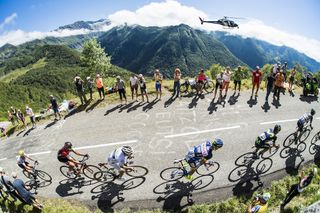
12. Retirement
Any notably unjustified retirement may lead to the withdrawal of all prizes won since the start of the race - Article 8.
13. Refusing to take part in official proceedings
Under article 21, any prize-winner who refuses to take part in the official proceedings at the start and the finish in his race outfit will be penalised.
14. Splits in the bunch
All riders in a given bunch shall be credited with the same time when they cross the finishing line. A split occurs when the gap of over 1 second is noted between two riders. Timekeeper–commissaires shall give a new time. However, in stages expected to finish in bunch sprints, the time gap required for a split shall be 3 seconds - Article 14.
Thank you for reading 20 articles this month* Join now for unlimited access
Enjoy your first month for just £1 / $1 / €1
*Read 5 free articles per month without a subscription
Join now for unlimited access
Try first month for just £1 / $1 / €1
Founded in 1891, Cycling Weekly and its team of expert journalists brings cyclists in-depth reviews, extensive coverage of both professional and domestic racing, as well as fitness advice and 'brew a cuppa and put your feet up' features. Cycling Weekly serves its audience across a range of platforms, from good old-fashioned print to online journalism, and video.

World sprint champion tells Cycling Weekly about her earliest Olympics memories, drinking coffee in Jakarta, and her passion for F1
By Tom Davidson Published 18 April 24
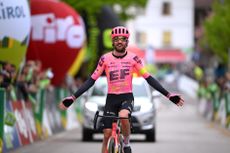
Brit triumphs from lone 45km breakaway, after days of battling allergies
Useful links
- Tour de France
- Giro d'Italia
- Vuelta a España
Buyer's Guides
- Best road bikes
- Best gravel bikes
- Best smart turbo trainers
- Best cycling computers
- Editor's Choice
- Bike Reviews
- Component Reviews
- Clothing Reviews
- Contact Future's experts
- Terms and conditions
- Privacy policy
- Cookies policy
- Advertise with us
Cycling Weekly is part of Future plc, an international media group and leading digital publisher. Visit our corporate site . © Future Publishing Limited Quay House, The Ambury, Bath BA1 1UA. All rights reserved. England and Wales company registration number 2008885.
- Subscribe to newsletter
It's going to be so great to have you with us! We just need your email address to keep in touch.
By submitting the form, I hereby give my consent to the processing of my personal data for the purpose of sending information about products, services and market research of ŠKODA AUTO as well as information about events, competitions, news and sending me festive greetings, including on the basis of how I use products and services. For customer data enrichment purpose ŠKODA AUTO may also share my personal data with third parties, such as Volkswagen Financial Services AG, your preferred dealer and also the importer responsible for your market. The list of third parties can be found here . You can withdraw your consent at any time. Unsubscribe
Tour de France – The Rules Explained

Some teams will focus on the general classification Yellow Jersey, whereas others will focus on winning sprints for The Green or the King of the Mountains Spotted Jersey. There are many rules, both spoken and unspoken, as teams stand to gain a lot from cooperation and respect. Here is what you need to know to enjoy watching Le Tour.
Keep the leaders safe
The start of Le Tour is always an edgy affair as teams compete to establish themselves at the head of the peloton. Crashes and injuries are a real risk, so team leaders need to be protected by their domestiques who effectively muscle everyone else away.

The irony is, the more the teams muscle each other away, the greater the risk of crashes in the peloton. The safest place to be is the front, and everyone is fighting to be there. This Catch 22 situation is almost impossible to mitigate through any official rules, but it’s exciting to watch.
The Yellow Jersey
Winning the General Classification (GC) means you get to wear The Maillot Jaune, aka The Yellow Jersey. To win the GC the leader of a race team must complete all the stages with the lowest overall time.
This means that a GC contender should be a solid all-rounder, equally at home on the mountains as they are in time-trial stages. It can become confusing when you consider a rider could win the GC without winning any individual stage.

Nutrition for Women – How to Get Enough Vitamins and Minerals
Think of it like this – Mark Cavendish may win every flat stage suited to a sprinter, but will probably finish mountain stages at least 20 minutes behind the likes of Nairo Quintana, whereas Quintana will finish a sprint stage within 3 minutes of Cavendish.
Breaks and stage wins
Regardless of who wins the overall Yellow Jersey, an individual stage win on Le Tour is always a special event, and smaller teams will often target one or two specific stages out of the Tour simply to get on the podium. Breaks are the coolest way to achieve that, but not the easiest.
Early on in a stage you may see a small group of riders attempt a break. Usually these are lower order riders with nothing to lose – they keep their sponsors happy by grabbing TV coverage, and most of the time they’re easily caught by the peloton that uses energy much more efficiently.
Royal Breaks
That doesn’t mean that Yellow and Green Jersey contenders can’t have some fun going for a break, but they’re only likely to do it when conditions go in their favour – and in 2016 that’s exactly what Froome and Sagan exploited.
Stage 11 of Le Tour was plagued with crosswinds, so the peloton had been doing their best to speed through it. Sagan found himself at the front with Thomas, Bodnar, and Froome. The Peloton was battered and bruised from minor crashes down the coastal route from Carcasonne, so when Sagan attacked, few cyclists felt confident enough to respond.

Froome leapt on Sagan’s wheel, and Bodnar and Thomas read the situation and realised a fully-fledged Royal Break was on the cards, with both the Yellow and Green Jerseys of Froome and Sagan committed to escaping the peloton. Sagan won the stage, and Froome put a significant dent into his rivals for the Yellow Jersey, finishing the stage in 2nd place.
King of the Mountains
Points are given at the top of climbs for suitably impressive performance, so specialist climbers have an advantage. Climbs are categorised from 1 to 4, with 1 being the steepest. The numbers loosely correspond to the gears of a car – so to drive up a Cat 1 climb you’d need to stick your car in first gear.
Race planners may give big points at the top of a Cat 3 climb if it’s deemed long enough to pose the same challenge as a shorter Cat 1 climb. I should add that there is one climb more difficult than a Cat 1 climb – the Hors Catégorie (HC). An HC climb is beyond categorisation and originally described a climb so severe a car couldn’t pass.
Getting points for the Green Jersey
Points can be given for winning sprints at various parts of a stage, often early on to encourage teams to either up the tempo in the peloton or break early in the hopes the break may succeed.
More points are given to the sprint at the end of the stage, and this encourages teams with specialist sprinters like Sagan, Greipel, Kittel, or Cavendish to stay together. This leads to a similar paradox of teams trying to dominate the front of the peloton to give their team leader a clear run at the finish line.

The classic race rule applies – the rider with the racing line may stick to it knowing that any competing cyclist will yield their line when they realise they have the disadvantage. Naturally, this doesn’t always work in the heat of the moment and spectacular crashes are a real risk in bunch sprints.

Articles you might like

Pogačar vs. van der Poel: Monumental Match-Up or Is There a Twist in the Tale?
Sunday’s prestigious Monument, the Liège-Bastogne-Liège, is the last of the season’s Ardennes Classics and the oldest of them all as it will be celebrating its 110th birthday this year. So it’s only right that it will pit arguably the two best road racers on the…

A Deep Dive with Alpecin–Deceuninck: The Role of Team Cars at Liège-Bastogne-Liège
The legendary Liège–Bastogne–Liège, also known as La Doyenne, “The Old Lady”, is right around the corner, coming up on April 21, 2024. The oldest of the five Monuments is run in the Ardennes region of Belgium famous for its hilly profile – which means killer…

Niewiadoma and Williams Survive Weather to Win the Brutal Flèche Wallonne
As the saying goes, Everybody talks about the weather, but nobody does anything about it. On the other hand, as Tony Soprano liked to say: “Whaddaya gonna do?”

Alpecin–Deceuninck: King of the One-Day Races
This has been a spectacular 2024 so far for Alpecin-Deceuninck: 10 race victories since the young Axel Laurance won stage 2 of the Etoile de Bessèges on February 1. Those victories include Milan–San Remo, the Classic Brugge-De Panne (both by Jasper Philipsen), the E3 Saxo…
- Help Center
- Chat with a Ride Guide
- 1-866-401-9636
- Retail Store
- Bike Services
Reset Password
We will send you an email to reset your password.
Don't have an account? Create an account
Create Account
Already have an account? Sign In
- Favorite your products & save them to your account
- Save a search & get notified when new products drop
- Be first to know about the latest events & promotions
Bike Finder
Results have arrived, tour de france explained: how you win & how it really works.
What do the yellow, green, and polka-dot jerseys mean? How do you win? How do teams work? Who are the favorites? We explain bike racing in this guide to the Tour de France.
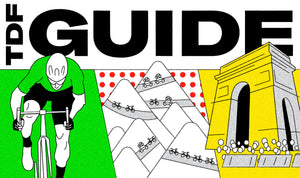
Written by: Spencer Powlison & Bruce Lin
Published on: Jun 22, 2023
Posted in: Features
Did you just get bitten by the road bike bug? Did you watch Tour de France: Unchained and feel hungry for more? Or have you always been puzzled by the daily deluge of Tour de France news? Then this beginner’s guide is for you.
We’ll cover the fundamentals of how this “game” is played. Also, we’ll delve into cycling’s paradoxical balance between being simultaneously a team sport and an individual sport, and many ways riders and teams play to win.
If you’re a seasoned cycling fan, please feel free to share this with your curious in-laws who always email you questions about pelotons, yellow jerseys, and more. We’ve all been there before!
[button] Shop road bikes [/button]
How The Tour de France Works
The tour de france: infographic.

What is the Tour de France
- The Tour de France is the world's most prestigious bike race which has been running for over 100 years.
- The Tour takes riders all across France, through the Alps and the Pyranees, and finishes in Paris.
- This year it will take place: July 1 - July 23, 2023
- The total race distance this year: 3,404 Km / 2,115 Mi
- The Grand Départ - The Tour de France often starts somewhere outside of France so other cities and countries can experience the excitement of the Tour. This year, the Tour will start in Bilbao, Spain.
Key Details
- 22 pro cycling teams will compete with 8 riders each ( 176 riders total )
- The race is split into 21 stages
- Riders race 1 stage per day
- Each stage has a stage winner. Winning a single stage at the Tour is a big deal.
- On average, racers will ride over 100 miles per stage .
- Riders will get 2 rest days , one after the first week, and another after the second week.
- The overall winner of the Tour de France is the rider with the fastest time after all 21 stages .
How To Win The Tour de France - Yellow Jersey

The winner of the Tour de France is the rider who has the fastest time after all 21 stages. Every stage is timed from start to finish, and every second counts toward the race's General Classification (GC). Every day, the current leader of the race will wear the yellow jersey so they are easy to spot. The rider wearing the yellow jersey when the race reaches the last stage Paris is the winner .
Riders to watch: 2022 winner Jonas Vingegaard, 2020 & 2021 winner Tadej Pogačar, David Gaudu, Romain Bardet.
[newsletter]
Other Ways to "Win" at the Tour de France
The Yellow Jersey is the biggest prize, but there are multiple secondary prizes on offer too. Some teams and riders don’t even bother racing for the yellow jersey and instead focus on these prizes .
Just like the yellow jersey, each day, the current leader in each classification wears a special jersey color so they're easy to spot.
Points Classification - Green Jersey
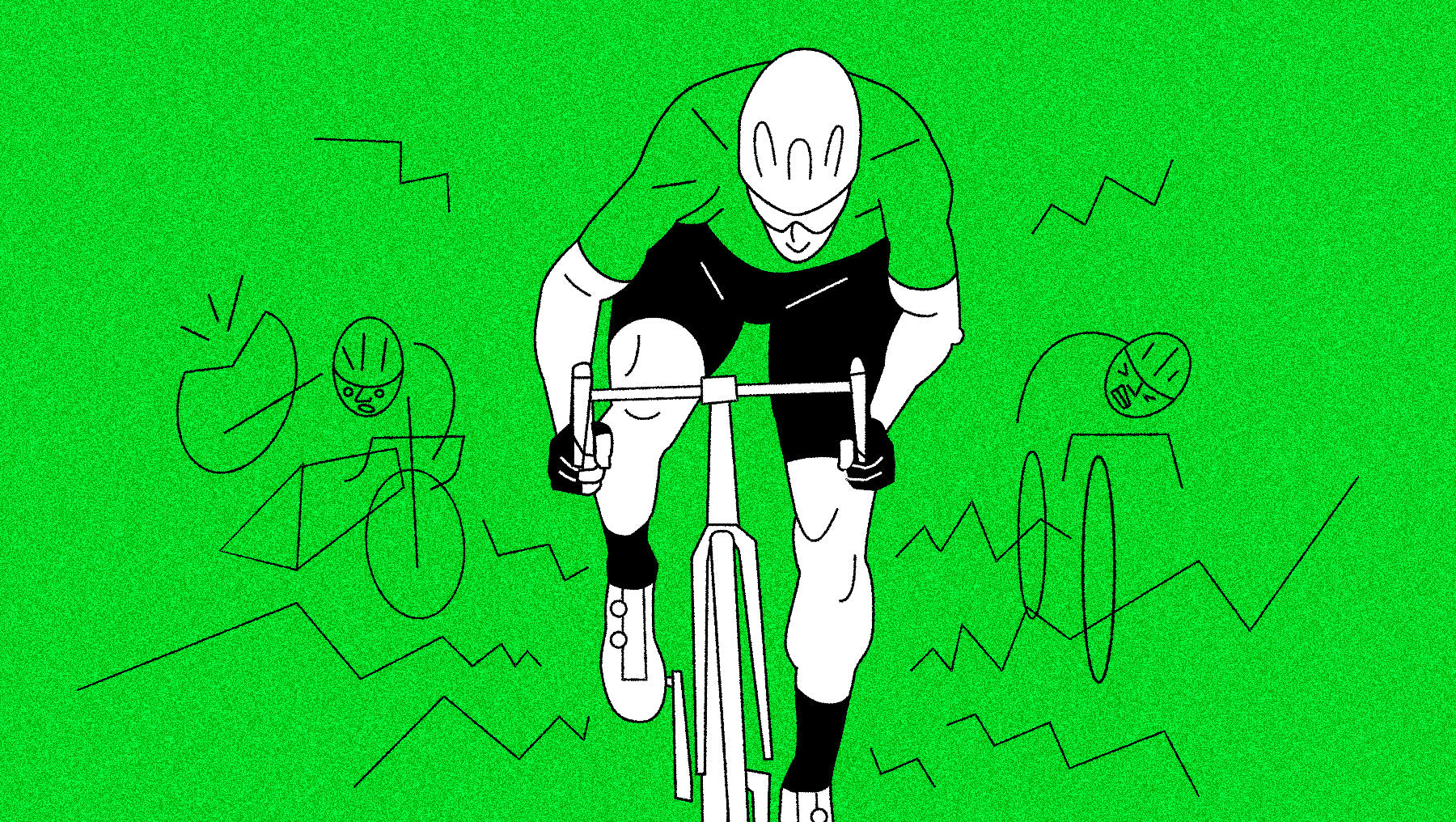
Also known as the sprinter’s jersey , this award goes to the rider who scores the most points throughout the race. Points are earned by finishing in the top-15 in a stage.
This classification favors “pure” sprinters (riders who don't compete on mountain stages), and more points are offered for winning flat stages. Riders can also earn points in mid-stage sprints that are usually stationed in towns to please the fans.
Riders to watch: Wout van Aert, Fabio Jakobsen, Jasper Philipsen, Mads Pedersen, and Dylan Groenewegen.
King Of The Mountains Classification - Polka-Dot Jersey

The Tour gives the polka-dot “ King of the Mountains ” jersey to the rider who collects the most points over the course of the race by reaching the summit of categorized climbs first.
The climb categorization system is opaque and subjective. What you need to know is that there are five climb categories. From easiest to hardest they are: category 4, category 3, category 2, category 1, and hors category (HC - French for “beyond categorization”). Riders get more points on harder climbs. Riders also get more points on mountaintop stage finishes, especially if they win.
Riders to watch: This one is tough to call until you reach the high mountains. Often anyone who’s in contention for the yellow jersey is a good bet.
Other Prizes

Best Young Rider Classification - White Jersey
This classification works the same way as the yellow jersey but is awarded to the highest-placed rider under 26 years of age. On rare occasions, a phenomenal young rider will win both the yellow and white jerseys.
Riders to watch: Tadej Pogačar, Jonas Vingegaard.
Best Team Classification - Yellow Helmets
Like the yellow or white jerseys, this award is given based on overall time in the race and the team with the lowest overall time wins this prize . Each team tabulates the finish times of its three best riders on every stage. The team leading this classification usually wears yellow helmets, helping them stand out in the bunch.
Most Aggressive Rider - Red Number
Also known as the Combativity Award , this is likely the most mysterious prize in the Tour. In every stage (except time trials), a jury decides which rider in the race was most aggressive — usually, that means attacking a lot or gambling on a breakaway. Late in the broadcast, the announcers usually note which rider was given the combativity prize. If you spot a rider with a red number on their jersey, then he was named most aggressive the stage prior. At the end of the Tour, one rider gets the Super Combativity award.
How Cycling Is Actually a Team Sport... Sort Of
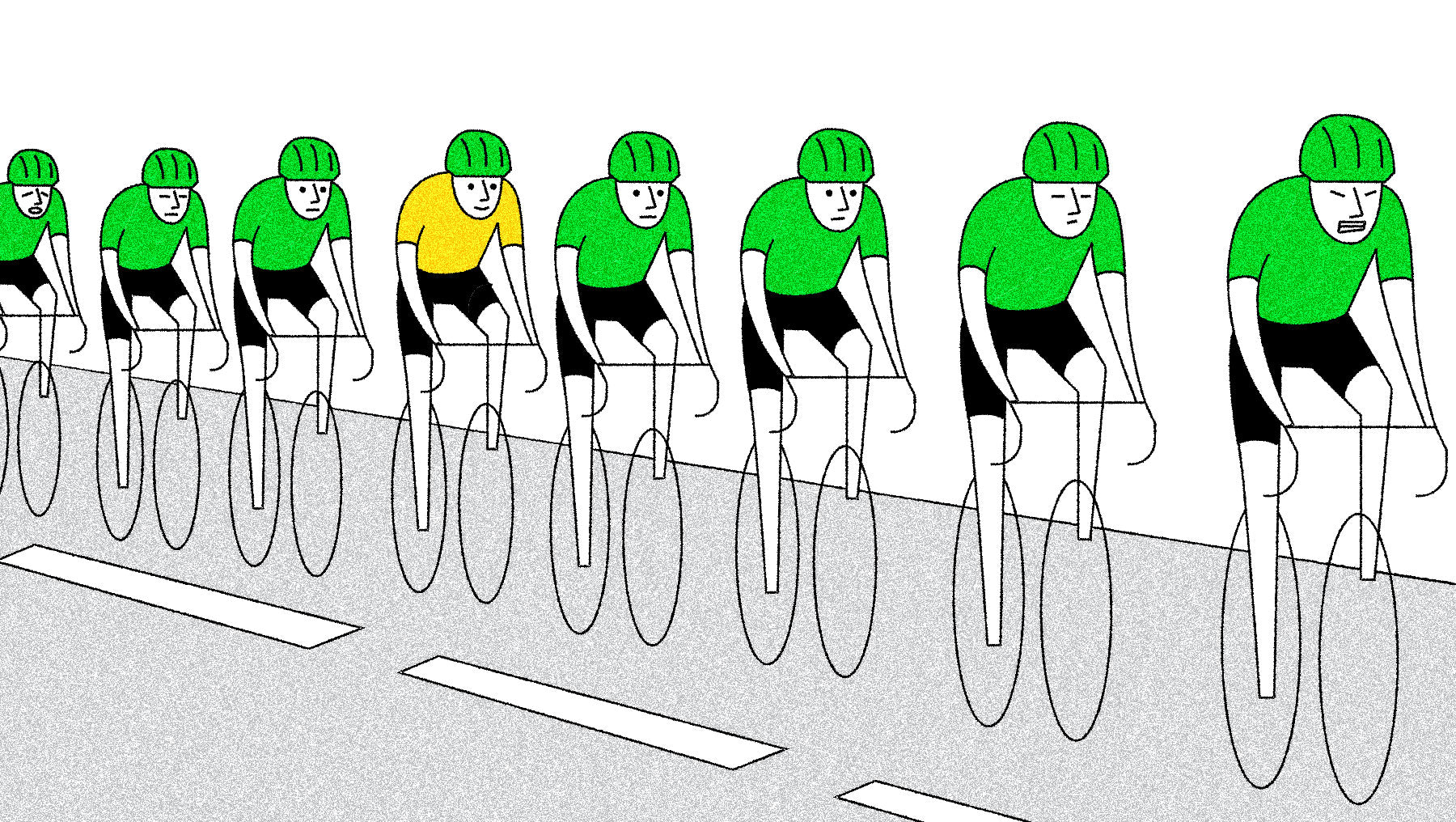
Why are there teams if only one rider can win the Tour de France? Professional road cycling has a curious tension between the team and the individual. The key thing to remember is this: If a cyclist wins a stage or holds one of the leader’s jersey for a single stage, it is viewed as a team success .
So if only one rider “wins,” what do the other seven riders on the team do to contribute to this elusive concept of teamwork? Here are some ways a group of individual cyclists comes together as a team to support their leader:
- Getting into breakaways (small groups that attack off the front of the main group) — that way his team doesn’t have to work to chase the breakaway down.
- Chasing down breakaways — to give the leader a chance to win or place well.
- Retrieving food and water for the leader or other key riders — bottle service on the road … what could be more luxurious!
- Pacing the leader up key climbs — although drafting isn’t as crucial, it can be a psychological advantage to have a teammate at your side.
- Pacing the leader back to the peloton in the event of a crash, mechanical, or split in the group — without teammates to draft, it might be nearly impossible to rejoin the peloton on some fast-paced stages.
- Giving the leader their bike or a wheel in the event of a mechanical — this can often be quicker than waiting for a team car or neutral support to show up with a spare.
What Types of Riders Make Up a Team?
GC (general classification) riders - These are the riders vying for the Tour de France overall win. They need to be solid all-rounders who are good climbers and time trialists. They are usually the team leader and the rest of the team works to support them.
Sprinters - Sprinters don’t contend for the overall win, and are more interested in winning individual stages. They often wait to attack at intermediate sprints and the finish line of each stage. Some teams are built entirely around a sprinter and focus on winning stages or the green jersey.
Climbers - Climbing specialists excel at going uphill. Climbers compete for stage wins on the tough mountain stages or work to support their GC leader in the mountains.
Domestiques - Most riders on the team will work as “domestiques” to support their team leader. They allow their leader to draft behind them to conserve energy, pace them up climbs, carry food and water, and provide support in case of crashes or mechanicals.
Time Trialists - Some riders specialize in time trialing. They can compete for wins on time trial stages or work as powerful domestiques on flat and hilly stages
What Types of Stages Are in the Tour?
The Tour de France route is different every year. Each stage is unique and offers different challenges to the riders. Here are the types of stages riders will contend with over three weeks:
Flat Stages - Flat stages are the ideal hunting ground for sprinters. Teams with sprinters will often work to keep the peloton together on flat stages, to ensure it ends in a bunch sprint where their sprinter has the best chance of winning.
Hilly Stages - Hilly stages mix it up with rolling hills that make it more difficult for the peloton to stay together. These types of stages can be won by sprinters, climbers, or breakaway specialists.
Mountain Stages - This is often where the Tour de France is won and lost. Mountain stages climb up into the high mountains in the Alps and the Pyrenees and it's where GC contenders will fight to gain time on their rivals.
Time Trials - The Tour de France always features at least a couple of time trial stages. Riders set off individually to set the fastest time on a set course. With no riders to draft, it’s less about race tactics and more about pure speed and power.
Strategies and tactics
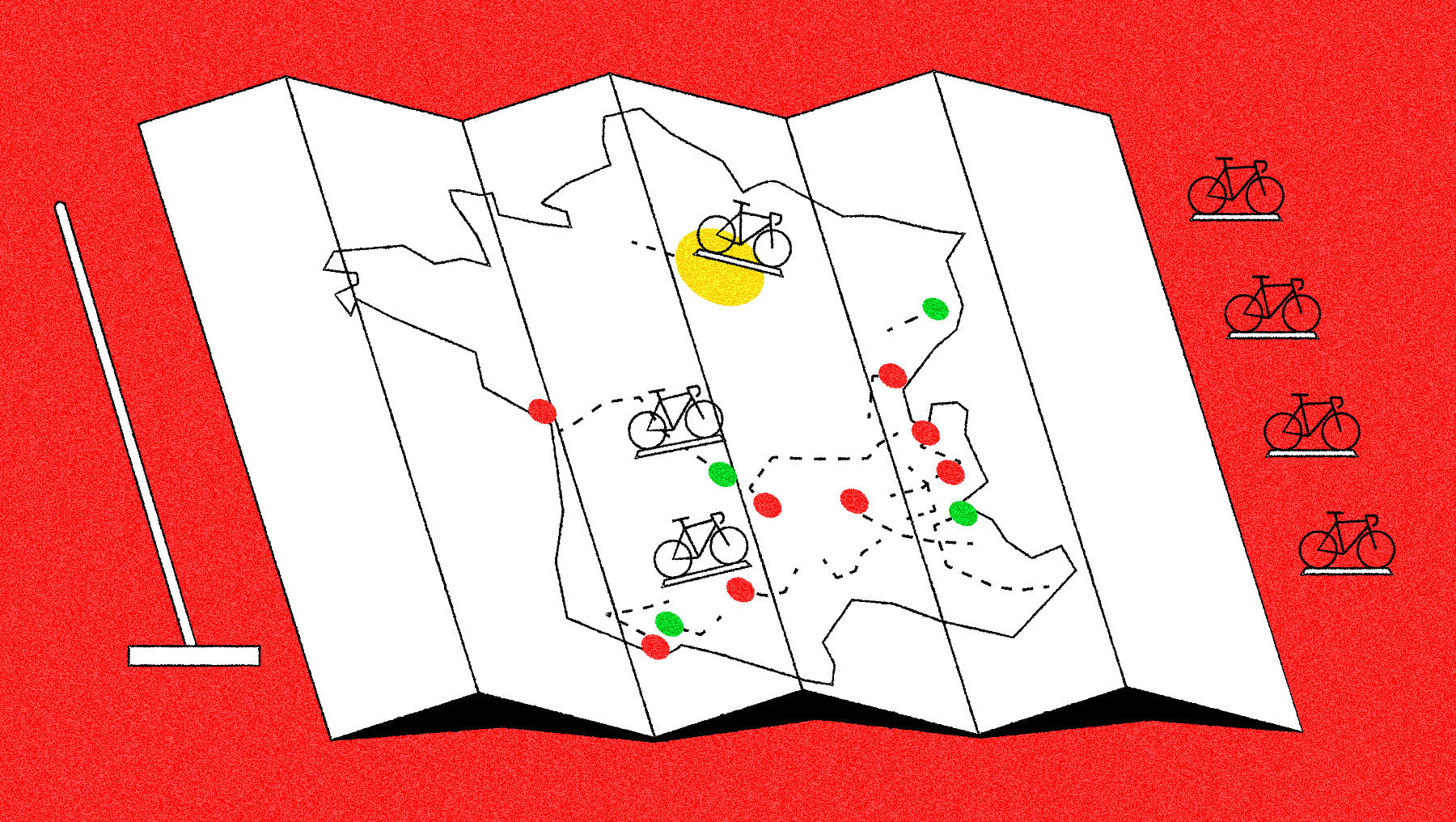
So we just covered some team dynamics, rider types, and stage types. How does it all fit together? Teams often settle on strategies prior to the race. They assess their strengths and weaknesses and find ways to succeed — whether that means winning the yellow jersey or simply wearing a King of the Mountains jersey for just one stage. Here are some examples of how teams might set their strategies, and how they might execute them with the right tactics:
Team with a top GC rider: Naturally, they’ll try to win the yellow jersey. This means surviving inconsequential flat and rolling stages to conserve energy for key mountain stages and individual time trials. The leader’s teammates will try to get into breakaways so that their team won’t spend energy chasing all day. They’ll also set up the team leader to attack on key climbs or at least follow his rivals to defend his position.
Team with top sprinter: To win the green jersey, they’ll target the flat stages. This means controlling the peloton and chasing down breakaways to set up a sprint finish. Like the GC team, they might also put a rider in the breakaway to ease the burden on the team, forcing rival sprint teams to chase. On mountain stages, the team might have to call riders back from the peloton to help pace their sprinter to the finish so he doesn’t get time-cut.
Team with top climber: Winning the King of the Mountains (KOM) classification is often less of an obvious team effort. These pretenders to the throne tend to be opportunistic. However, it is advantageous to have a teammate in the breakaway on a key mountain stage when points are up for grabs. Also, when defending the polka-dot jersey, teammates can contest the climbs and finish ahead of KOM rivals to spoil their attempt to take over the classification lead by scoring points.
Smaller team without top leader: These are the teams that always try to put a rider in the day’s breakaway. This could earn them the Combativity Prize, or if they play their cards right, a stint in a leader’s jersey or even a stage win. This strategy requires constant attacking in the early kilometers of the race — something most fans rarely see on the broadcast. It is a hectic, painful part of the stage, but it’s crucial in establishing a break. Meanwhile, a breakaway rider’s teammates might patrol the front of the peloton to disrupt the chase.
Three Tips To Watch Like A Pro
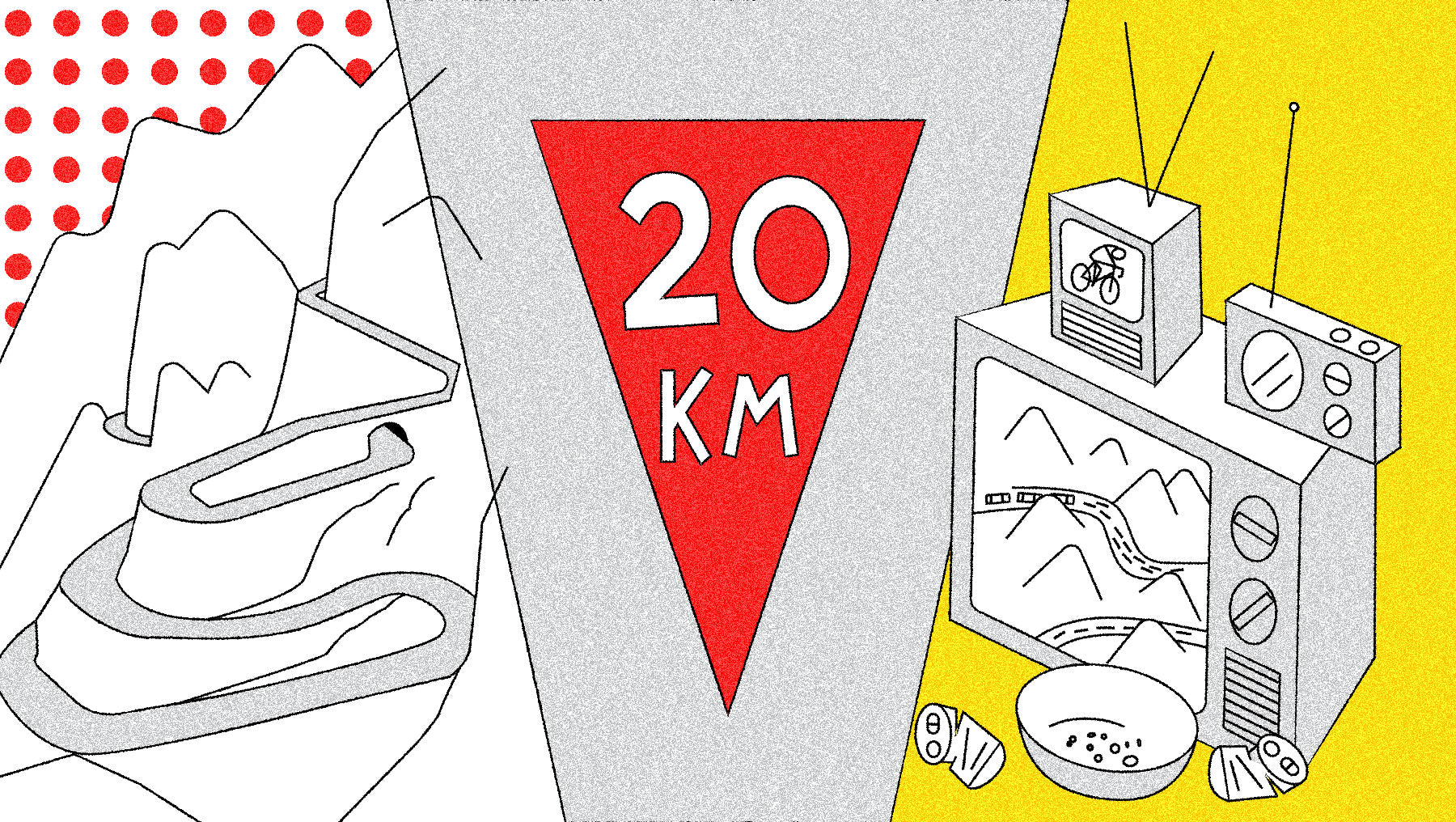
Now that you understand the basics of how the Tour de France is raced, what do you, the new cycling fan do? There are daily stages for three weeks. That’s a lot of cycling!
Even if you don't have a way to watch the TV broadcast, it's easy to find highlights and extended highlights on YouTube. Fortunately, you don’t have to put your life on hold to watch the Tour de France. There are some reliably important stages you can focus on to catch the key action.
Can’t watch daily? Pick the key mountain stages. There are usually about 5-8 key mountain stages when the overall race is won and lost. Most of them are summit finishes, and they’re split between France’s two key mountain ranges: the Alps and Pyrenees. The first few ordinarily come in stages 6-9 before the first rest day, and the second round is often scheduled for the final week of racing. Occasionally, another summit finish, such as Mont Ventoux in Provence, will be on the list of important stages.
Watching daily? Tune in when things really heat up. On most flat stages, you can wait until the final 20 kilometers to tune in and see the sprinters fight it out. Some rolling stages might be entertaining in the final 50-60 kilometers if late breakaways occur. On mountain stages, it’s best to start watching as early as possible because sometimes, crazy things happen on the day’s first climbs.
Watching a LOT of TDF? Look for the nuances. If you’re going to have the race on all day, every day, you’ll need to dig a little deeper to enjoy the subtleties of the race. Try keeping track of riders who are often making the breakaway. Watch the sprint teams work together — or not — to chase an escape. Who looks to have strength in numbers, and who is not present at the front of the race? Are the GC riders staying out of trouble or tail-gunning at the dangerous back of the peloton? Usually, at any given time in the race, any given rider is positioned where they are for a specific reason. Look for clues to sort out what is happening.
More Fun Tour de France Info
[button] What Tour de France Racers Eat [/button]
[button] Guide to Netflix's Tour de France: Unchained [/button]
[button] The History of Innovative Tour de France Tech [/button]
[button] Our Best and Worst Moments of the 2022 Tour [/button]
[button] The Best Bikes of the Tour 2010-2019 [/button]
More Features
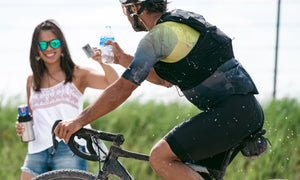
Features, Guides, Latest Apr 16, 2024
How I Fuel for Performance in LONG Bike Races
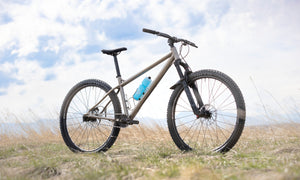
Bikes, Features, Latest Apr 15, 2024
The Sanitas Tap Root: Win A Singlespeed Ti Hardtail With Downcountry Geo
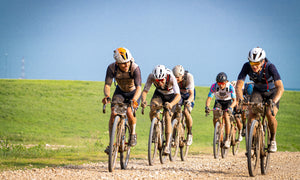
Features, Gravel, Guides, Latest Apr 10, 2024
The Best Gravel Bike Comfort Upgrades for Unbound (and Beyond)
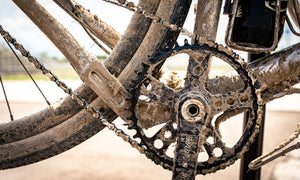
Features, Gravel, Guides, Latest Apr 1, 2024
Waxing Your Chain vs. Using Wet Lube for Dust, Mud, & Unbound Gravel
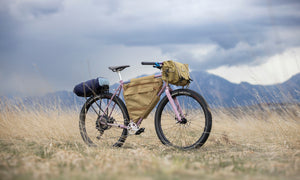
Bikes, Features, Gravel, Latest Mar 28, 2024
This Crust Bombora Shows Us a Different Side of Cycling
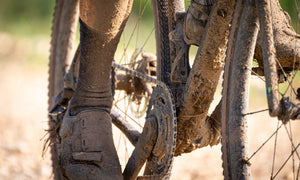
Features, Gravel, Guides, Latest Mar 25, 2024
1x vs. 2x: What Drivetrain Should You Race at Unbound Gravel?
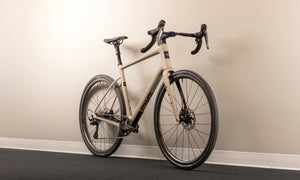
Bikes, Features, Gravel, Latest, Tech Mar 22, 2024
This ENVE MOG x Classified Bike Might Represent the Future of 1x
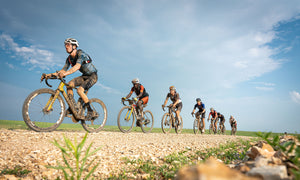
Features, Gravel, Guides, Latest Mar 21, 2024
Choosing The Best Tire Setup for Racing Unbound Gravel
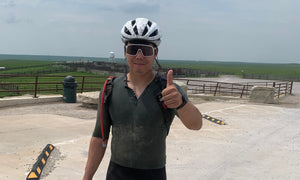
Features, Fun, Gravel, Latest Mar 19, 2024
I'm Going Back to Unbound Gravel This Year (for Vengeance!)
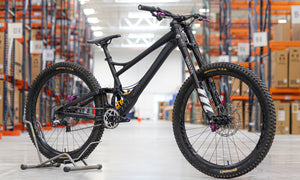
Bikes, Features, Latest, MTB Mar 15, 2024
Banshee Legend DH Bike Review: A Privateer’s Dream Bike
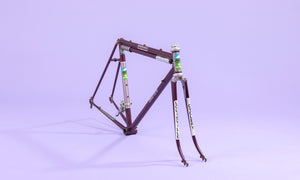
Features, Latest, Road, Vintage Mar 14, 2024
The First Frame I Ever Built
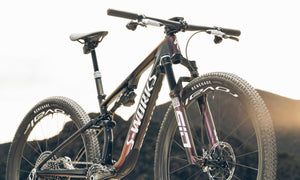
Features, Latest, MTB, Tech Mar 12, 2024
RockShox Flight Attendant: Will XC Welcome Its New Electronic Overlords?
New arrivals.
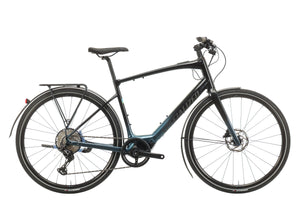
Certified Pre-Owned
Specialized Turbo Vado SL 5.0 EQ Hybrid/Commuter E-Bike - 2021, Large
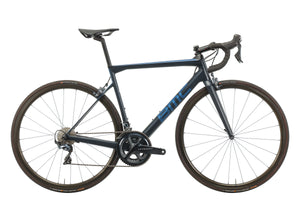
BMC Teammachine SLR02 ONE Road Bike - 2019, 54cm
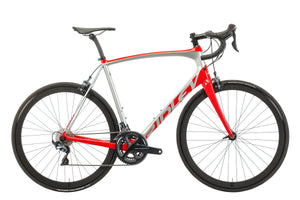
Ridley Fenix SL Road Bike - 2021, Large
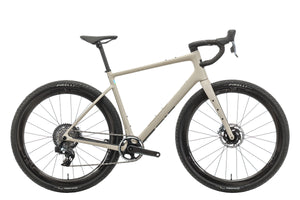
ENVE MOG Gravel Bike - 2023, 58cm
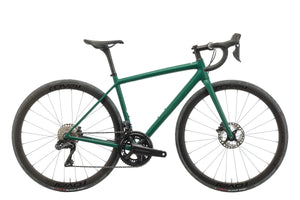
Specialized Aethos Expert Road Bike - 2022, 52cm
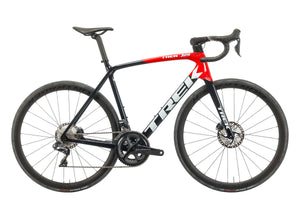
Trek Émonda SLR 7 Disc Road Bike - 2021, 56cm
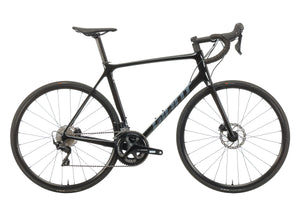
Giant TCR Advanced Disc 2 Pro Compact Road Bike - 2022, Large
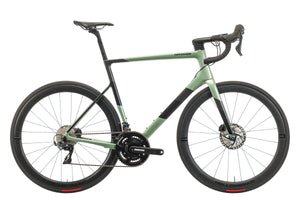
Cannondale SuperSix EVO Hi-MOD Road Bike - 2020, 58cm
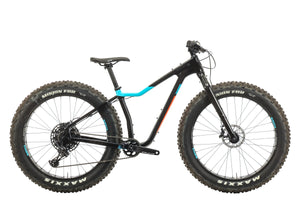
Salsa Cycles Mukluk Carbon NX Eagle Fat Bike - 2019, Small
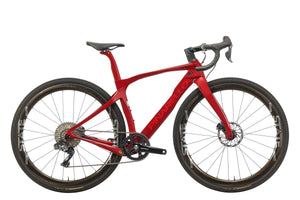
Pinarello Grevil Gravel Bike - 2021, 44cm
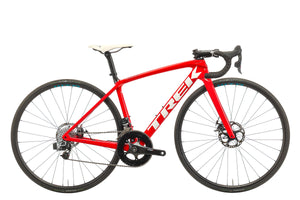
Trek Émonda SLR Project One Road Bike - 2021, 50cm
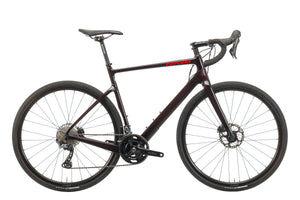
Cervélo Áspero GRX Gravel Bike - 2020, 56cm
- off.road.cc
- Dealclincher
- Fantasy Cycling
Support road.cc
Like this site? Help us to make it better.
- Sportive and endurance bikes
- Gravel and adventure bikes
- Urban and hybrid bikes
- Touring bikes
- Cyclocross bikes
- Electric bikes
- Folding bikes
- Fixed & singlespeed bikes
- Children's bikes
- Time trial bikes
- Accessories - misc
- Computer mounts
- Bike bags & cases
- Bottle cages
- Child seats
- Lights - front
- Lights - rear
- Lights - sets
- Pumps & CO2 inflators
- Puncture kits
- Reflectives
- Smart watches
- Stands and racks
- Arm & leg warmers
- Base layers
- Gloves - full finger
- Gloves - mitts
- Jerseys - casual
- Jerseys - long sleeve
- Jerseys - short sleeve
- Shorts & 3/4s
- Tights & longs
- Bar tape & grips
- Bottom brackets
- Brake & gear cables
- Brake & STI levers
- Brake pads & spares
- Cassettes & freewheels
- Chainsets & chainrings
- Derailleurs - front
- Derailleurs - rear
- Gear levers & shifters
- Handlebars & extensions
- Inner tubes
- Quick releases & skewers
- Energy & recovery bars
- Energy & recovery drinks
- Energy & recovery gels
- Heart rate monitors
- Hydration products
- Hydration systems
- Indoor trainers
- Power measurement
- Skincare & embrocation
- Training - misc
- Cleaning products
- Lubrication
- Tools - multitools
- Tools - Portable
- Tools - workshop
- Books, Maps & DVDs
- Camping and outdoor equipment
- Gifts & misc
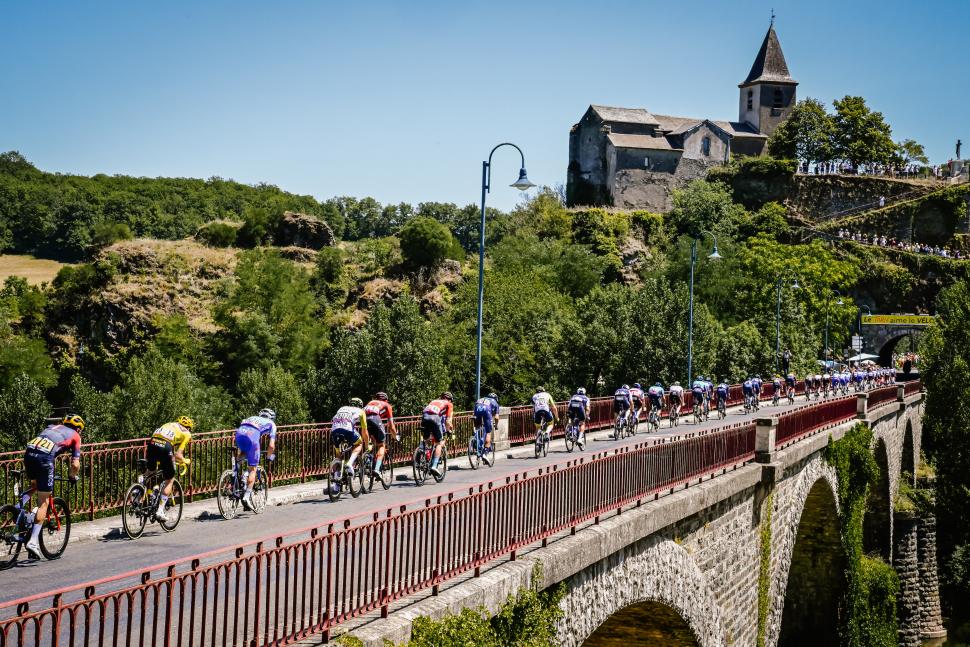
The unwritten rules of the Tour de France - what are they and how are they enforced?
First Published Jul 11, 2022
20 years ago this July, on the final climb of the final mountain stage of the 2003 Tour de France, Jan Ullrich finally looked capable of defeating his old adversary, Lance Armstrong. For arguably the only time during his seven-year-reign, the disgraced Texan appeared out-of-sorts at the Tour. Throughout the Pyrenees, with a rejuvenated Ullrich – the winner of the 1997 Tour and by this point already twice a runner-up to the American – breathing down his neck, Armstrong and his manager Johan Bruyneel’s tactics were simple: “hang on”.
And then, on that final showdown on Luz Ardiden, the yellow jersey hit the deck. Hugging a slight right-hand bend, Armstrong’s handlebars tangled with a child’s bag, sending him to the ground with a thud.
As Armstrong struggled with his pedals (and almost headbutted his handlebars) during a frantic effort to regain contact, Ullrich called a halt to hostilities in the lead group.
In his 2022 biography of Ullrich, Daniel Friebe writes that the German hero felt bound by “an unwritten cycling diktat – that, when a rival crashes or punctures, you wait, particularly if he’s in the yellow jersey.”
For Ullrich, so close to a redemptive second Tour win, the choice was simple because, as he put it after the stage, “fairness is everything in sport”. And besides, Armstrong had done the same for him after a similar incident two years before.
Following Ullrich’s adherence to cycling’s unwritten code (a gesture somewhat indicative of the honour amongst thieves which existed in the peloton during that murky era), the US Postal rider – adrenaline coursing through his veins – attacked and won the stage, and with it the Tour. Ullrich was devastated.
Seven years later, Andy Schleck was in yellow on the Port de Balès during the penultimate Pyrenean stage of the race. Schleck – the Ullrich to Alberto Contador’s Armstrong – stood on the pedals to attack. As he changed gear, he dropped his chain. Contador, who had accelerated to match Schleck’s burst, simply kept going, as his closest rival forlornly fumbled with his bike at the side of the road. Social media outrage and questionably sincere video apology aside, chaingate – as it quickly became known – effectively won Contador the Tour.
These two incidents, so similar in nature but with strikingly different outcomes, highlight that while there's a whole book of regulations that govern the Tour de France, an age-old set of unwritten rules also determine how the race develops.
We’ll forgive you for being confused by these. As we saw in the Pyrenees in 2003 and 2010, they are incredibly open to interpretation and often create more problems than they solve, but we thought that we’d take a look at some that you might find mentioned during this year’s Tour de France.
First, and most confusing of all…
You can’t attack the maillot jaune when the following happens…
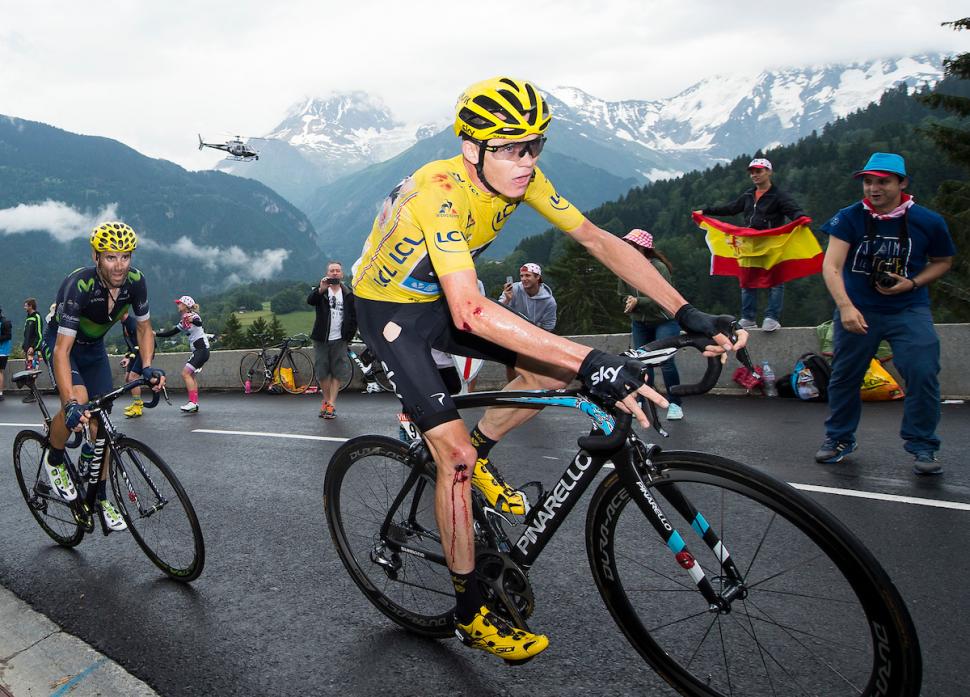
They crash: If the leader of the race goes down in a crash then don’t you be thinking about attacking until they are safely back in the bunch. But that’s only if the racing hasn’t really kicked off yet, of course.
If the peloton is lined out with riders fighting to stay in contact, then it’s fair game (sometimes). Even during the heat of battle, a truce can be achieved if those at the front believe that a rival has been hampered by circumstances beyond their control.
How does this get decided? As we saw in 2003 with Ullrich, who stood the most to gain from Armstrong’s misfortune, the riders at the front usually decide, following a lot of conversation and hand waving.
They suffer a mechanical problem: Like a crash, this one is subject to the race situation at the time of the incident. If the racing is on, with the pace high and attacks already flying off the front, then the yellow jersey just has to get on with it and get back to the front of the race.
In fact, mechanicals are considered by many to be simple bad luck. Contador attacking Schleck in what became known as ‘chaingate’ is the perfect example of this. One side of the argument (and believe me, this went on for weeks back in 2010) says that Contador showed the ruthless instinct of a winner while others reckoned that it was bad form to take advantage of Schleck's chain coming off. You just shouldn’t have dropped that chain, Andy!
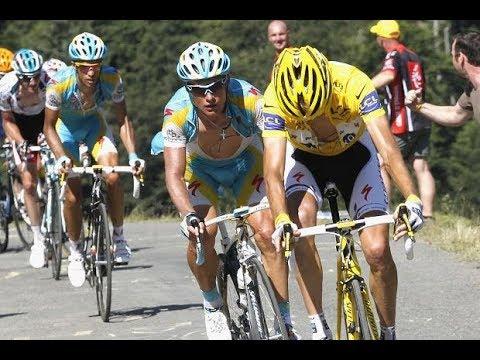
But (just to confuse matters further) when Chris Froome shipped his chain in 2017, Fabio Aru – who had hit the front just as the Team Sky rider glanced down at his misfiring bike – was chastised by his rivals, who ordered the Italian champion to call off his attack until Froome had regained his place in the group.
The bottom line? Normally, the riders adhere to the unwritten rule that a Tour de France should not simply be won by luck or through another rider’s misfortune…
Unless, of course, your rivals want to gang up on you to force you out of yellow; a fate suffered by French hope Jean-François Bernard at the 1987 Tour, who shipped a chain and then punctured just as Stephen Roche, Pedro Delgado and a few others took flight on the way to Villard-de-Lans. He never saw them, or yellow, again.
I told you it was complicated…
They stop for a nature break: This one, thankfully, is a bit more straightforward (mostly). If the start of a stage has been fast and a small group has gained a small advantage over the peloton, the yellow jersey stopping for a piddle is the sign that the peloton will now relax and let the breakaway take a few minutes' lead.
A collective sigh of relief will be released around the peloton when the yellow jersey's hand goes up. Riders of a team that has failed to make the breakaway may now quietly remove their radio earpieces as the team manager won’t be best pleased.
Of course, while this particular unwritten rule tends to be followed religiously, sometimes a poorly timed nature break (and some opportunistic tactical manoeuvring on the part of rivals) can prove fatal to a race leader.
Just ask Demi Vollering, who stopped for a pee alongside her SD Worx teammates on stage six of this year’s Vuelta Femenina, only for Annemiek van Vleuten’s Movistar team – instigating a pre-planned tactic, they later claimed – to begin drilling it on the front.
That conveniently timed attack proved enough, just, for Van Vleuten to take the overall win, despite her younger compatriot looking stronger throughout the week, and prompted Vollering to accuse the world champion of breaking one of cycling’s most sacred unwritten rules. The SD Worx leader may have been furious, but Van Vleuten was the winner. And, at the end of the race, that’s all that matters.
Drafting is ok(ish)

Coming back from a crash, mechanical or nature break will require a racer to ride at a speed faster than the peloton. That’s difficult, so the rider will take a draft in the convoy of team cars to make things easier. This is actually not allowed, but the race jury generally turns a blind eye as otherwise they’d have half of the peloton disqualified for being outside of the time limit every day.

But sometimes the race jury notices, and then drafting a car is suddenly not ok. This is usually when the racing is at a critical stage, or if a rider is taking an unfair amount of time behind their team car. Sounds woolly at best? It is.
Poor old Nils Eekhoff was disqualified from the U23 World Championships after he had crossed the line first. The jury decided that his drafting of a car with 125km left to race – after he had crashed and waited to be examined by the race doctor – constituted a breach of the rules.
The whole situation made many question the jury’s decision, though others were simply frustrated by the lack of consistency around the enforcement of this rule.
Speaking of a lack of consistency…
During the second stage of last year’s Tour, when the race was still in Denmark, a ‘barrage’ was called by the commissaires (ordering team cars out of the gap between the peloton and a chasing group, so the chasers can’t take advantage of the cars’ draft) as Rigoberto Uran attempted to regain contact following a crash on a bridge, but not when race leader Yves Lampaert went down. Murky indeed.
You scratch my back…
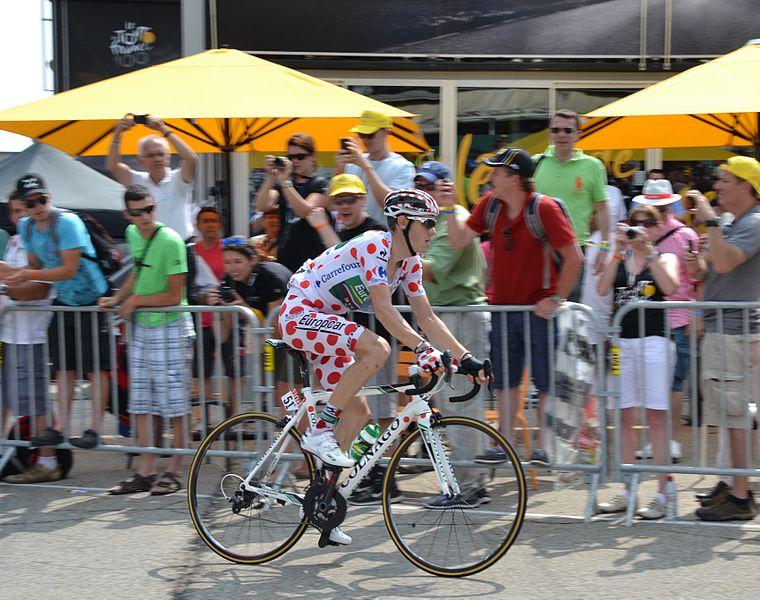
If you’ve ever looked at a bike race and wondered why certain riders are working in the breakaway and others aren't, the answer is often that they're trying to achieve different things.
One rider might be chasing the mountain points on offer at the top of climbs, while another needs the points from the intermediate sprint. These riders won’t contest the other rider’s competition, though all are expected to shoulder an equal workload in the effort to keep the breakaway ahead of the peloton.
Once a rider has collected all of their points available for that day, they may well give their breakaway companions some extra help on the front of the bunch, especially if those riders have allowed them to take points uncontested.
This unwritten rule is highly nuanced and full of sub-plots and mini rivalries.
The peloton will decide when to race
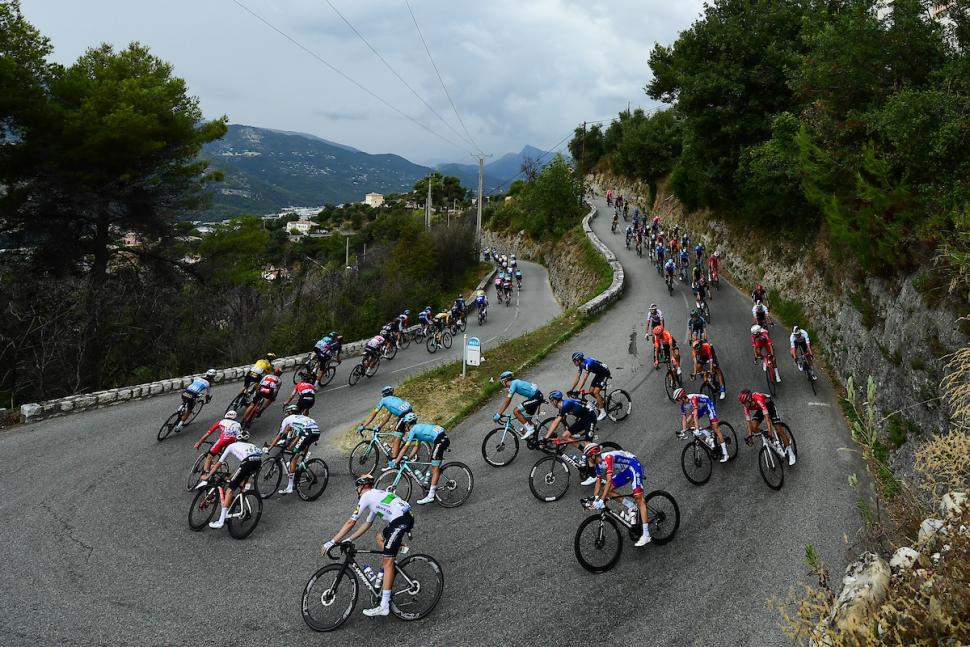
The peloton has in the past decided to neutralise the race if they feel that it is too dangerous. This can be because of poor road conditions, extreme weather or because of too many crashes. We've also seen protests to highlight danger in races, such as the mini stoppage that happened at the beginning of stage four in 2021 following a number of terrible crashes in the preceding days.
Stage one of the 2020 Tour saw a downpour on roads that hadn’t seen rain in several weeks. The result was a number of crashes, and the decision was taken to neutralise a descent to the finish before the race started again on the flat run to the line.
In situations like this, the peloton will turn to its 'patrons'. In years gone by, this would have been one dominant rider – Merckx, Hinault, Cancellara – but today there isn’t one voice that controls proceedings. Instead, senior riders and road captains like Luke Rowe would collectively agree to take that decision, and the peloton follows their lead.
When Astana’s Omar Fraile decided to ignore this and push the pace on the descent, he received quite a bit of abuse as he was absorbed by the peloton.
The final stage is a procession... until it isn't
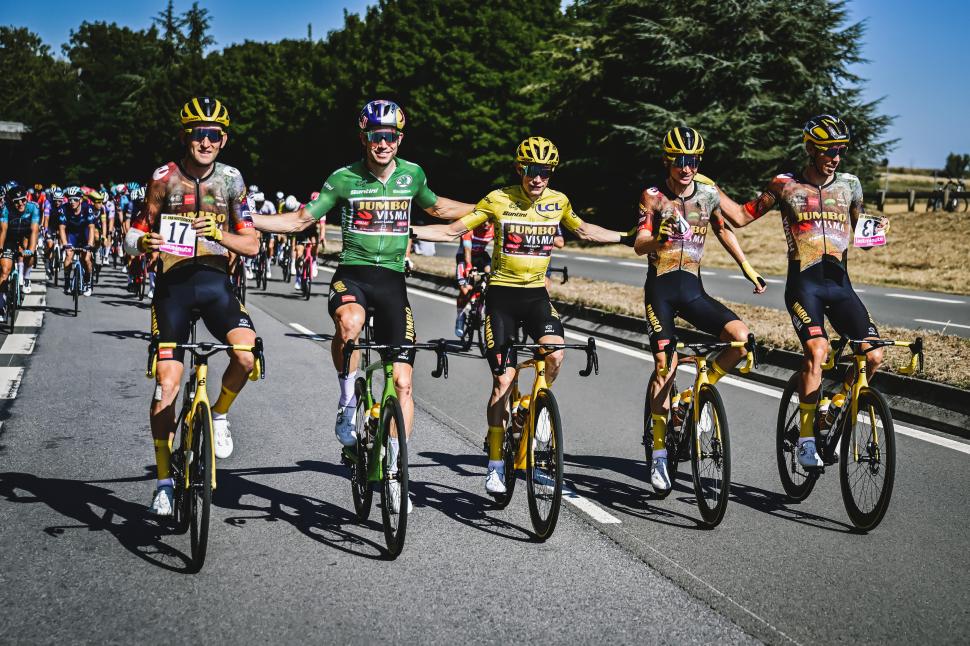
There is absolutely no written rule that states that the final stage of the Tour de France should have no outcome on the overall race, but this is the way it has been for years. The final day is reserved for sipping champagne, taking team pictures, and generally rolling along at a speed that makes half the peloton nervous about missing their flight home.
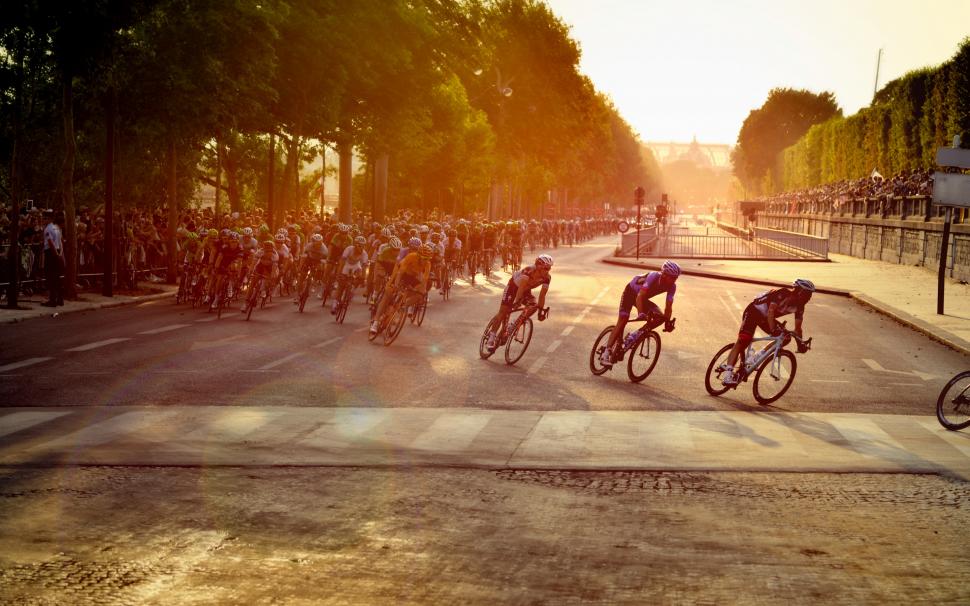
Generally, the race starts just outside of Paris and rolls at this leisurely speed until the riders hit the Champs Elysees (or when the Eiffel Tower comes into view, as tradition dictates). The team of the yellow jersey usually leads the race across the finish line on the first lap, though a rider that is retiring may be allowed to roll off the front for the honour.
After that, the eight laps up and down the famous boulevard are suddenly a proper race again with attacks that are almost certain to fail, heading up the road before the sprint is won and the race is finished.
However, with the 2024 Tour de France set to finish in Nice to avoid a clash with the Paris Olympics , we may finally be treated to some ‘proper racing’ - with maybe even the yellow jersey up for grabs - on the final day for the first time since 1989… We can hope anyway!
A benevolent yellow jersey
It may seem hard to believe now, in an era when Tadej Pogačar and Jonas Vingegaard appear intent on gobbling up everything before them at the Tour, but there was a time when the dominant rider at the Tour de France was expected to share the love around the peloton, and dole out favours and stage wins like a yellow-clad Father Christmas.
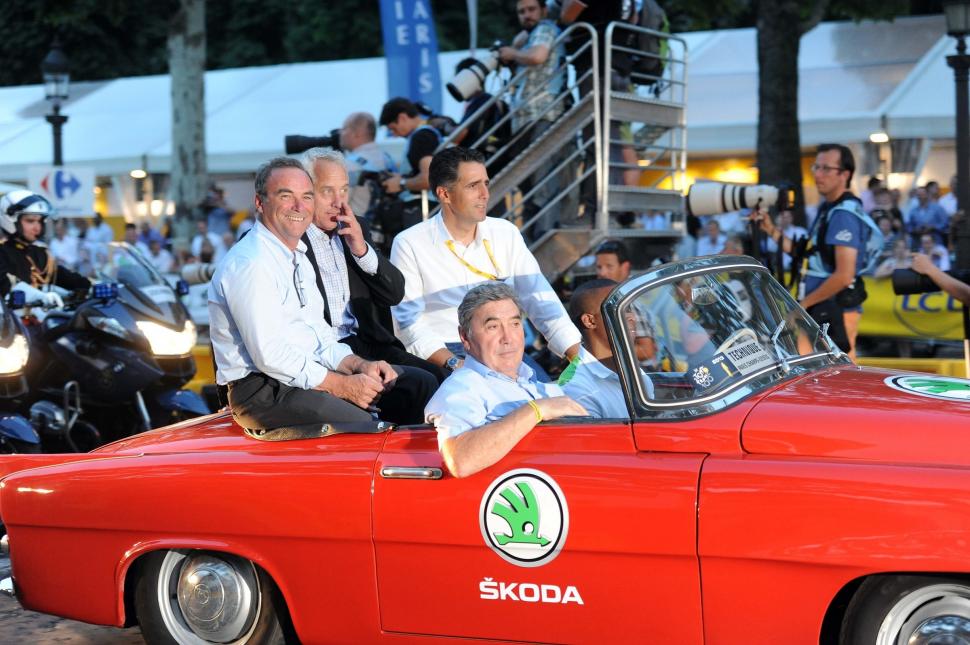
That tradition arguably began in the early 1990s, when Big Miguel Induráin eschewed the cannibal-like instincts of Merckx and the iron-fisted bravado of Hinault for a more genteel form of domination, bartering stage wins and fleeting glimpses of glory to his fellow riders for an easier passage through five straight Tour victories. He was going to win anyway, so why be greedy?
Even Lance “No Gifts” Armstrong carried on that tradition for the most part, letting the likes of Ivan Basso, Alejandro Valverde, and Marco Pantani cross the line ahead of him (though he quickly came to regret letting Il Pirata beat him to the top of the Ventoux in 2000).
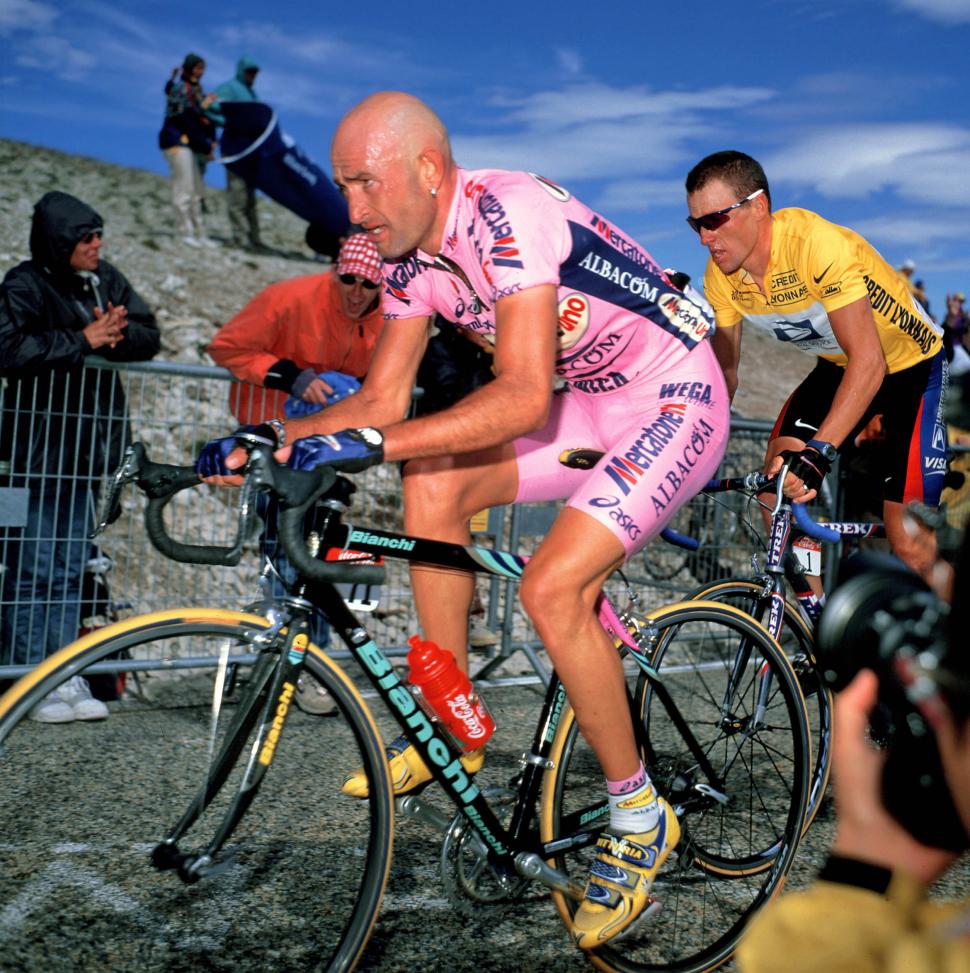
Vingegaard, meanwhile, notably eased up during last year's final time trial to gift the win to teammate Wout van Aert, though doesn't seem as yet minded to dole out favours to rivals. Pogačar, for his part, appears to have no need or desire to curry favour with the peloton either. Perhaps they’ll both mellow in their old age?
Café wisdom: road.cc readers on unwritten rules of the Tour de France
In a previous edition of this feature, kil0ran added to our list of unwritten rules with these unconventional traditions:
"If you pick up a jersey due to a penalty you must make clear that it's not how you'd like to have won it.
"See also the rare occurrence of the maillot jaune (or any maillot) being unable to start the next day due to injury. Or disqualification."
kil0ran's point about a race leader abandoning while in the leader's jersey was even raised at this year's Giro d'Italia.
Cycling tradition dictates that if a rider finishes a stage in the overall lead but fails to start the next day, no-one should wear the yellow jersey on that stage – as it has yet to be earned by anyone other than the unfortunate DNSer (once that stage finishes, it’s good to go of course).
At the Giro, however, Geraint Thomas rocked up after the rest day in the pink jersey, despite race leader Remco Evenepoel only pulling out with Covid following the stage nine time trial.
I suppose jersey sponsors have paid their money for a reason…
Clear as mud, isn't it? If you have any more unwritten rules to add, let us know in the comments!
Main image: ASO, Pauline Ballet
Help us to fund our site
We’ve noticed you’re using an ad blocker. If you like road.cc, but you don’t like ads, please consider subscribing to the site to support us directly. As a subscriber you can read road.cc ad-free, from as little as £1.99.
If you don’t want to subscribe, please turn your ad blocker off. The revenue from adverts helps to fund our site.
Help us to bring you the best cycling content
If you’ve enjoyed this article, then please consider subscribing to road.cc from as little as £1.99. Our mission is to bring you all the news that’s relevant to you as a cyclist, independent reviews, impartial buying advice and more. Your subscription will help us to do more.
Ryan joined road.cc in December 2021 and since then has kept the site’s readers and listeners informed and enthralled (well at least occasionally) on news, the live blog, and the road.cc Podcast. After boarding a wrong bus at the world championships and ruining a good pair of jeans at the cyclocross, he now serves as road.cc’s senior news writer. Before his foray into cycling journalism, he wallowed in the equally pitiless world of academia, where he wrote a book about Victorian politics and droned on about cycling and bikes to classes of bored students (while taking every chance he could get to talk about cycling in print or on the radio). He can be found riding his bike very slowly around the narrow, scenic country lanes of Co. Down.
Add new comment
Latest comments.
Not many animals cause grinding noises when underneath a vehicle.
I listened to the BBC R4 prog "Should cyclists stay in their lane" and it was pretty much what you'd expect from the BBC, a well-informed cyclist...
Of course you don't actually want to spend money intended for infrastructure on infrastructure, you want to spend it on plans for infrastructure,...
My bet is that all these tires popping off are from people with bad pressure gauges or they're simply just putting too much air in on purpose. ...
You have to add images via a reply to yourself after the topic is created. One at a time too.
“Plus, riders who pair CarBack to their smartphone using the Trek Accessory app can enjoy even more features, including the ability to see the...
Had a Kona Blast sometime around the turn of the century, that was a pretty decent mountain bike for not much money....
David9694 - you were right! These new autonomous vehicles really are conspiring to run out of control!...
Decathlon have the Garmin Varia RTL515 on offer at the moment for £129.99: https://www.decathlon.co.uk/p/rearview-radar-varia-rtl515-65-lumens/_/R-...
So when you said "all Jews" you didn't actually mean all Jews, just religious ones. However even that distinction is erroneous, as you must surely...
Official games
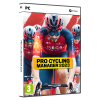
2023 Edition
- Stage winners
- All the videos
Tour Culture
- Commitments
- key figures
- Sporting Stakes
- "Maillot Jaune" Collection
- The jerseys

Frequently asked questions
People access.
For security and or protocol reasons, the “in race” programmes as well as access to the Presidential Grandstand in Paris are exclusively reserved for persons aged 18 and older, the “pre-race” programmes are open to persons aged 16 and older while minors under the age of 14 are not permitted to be in the Publicity Caravan.
Strollers are allowed in the hospitality areas. Given the terrain, their condition and the wiring or devices needed to organise the event, their circulation could however be complex.
The Tour de France provides mobile toilets that are not equipped with changing areas.
Guide and assistance dogs are welcome on the Tour de France. Other pets are not allowed in the hospitality areas.
The Tour de France is designed to welcome all audiences. However, the itinerancy of the event sometimes makes it difficult for us to anticipate access constraints at the sites, which is why we are appealing for your indulgence.
Our concern is to facilitate your visit to the Tour de France so that you have a pleasant day! We will be delighted to welcome you in the best possible conditions.
We will welcome you with your own wheelchair (no loan or rental service on site).
Guest parking is available at all sites (start, stopover and finish) and near the hospitality areas. Do not hesitate to ask our Tour de France reception staff to be present in the car park as soon as you arrive.
All of our hospitality areas (Tour de France Village, guest finish areas, stage relay and grandstands) are equipped with access ramps as well as adapted and priority sanitary facilities.
For visually impaired people accompanied by an assistance dog, the latter is of course authorised in the areas of the Tour de France on presentation of a permit proving that it has been trained in an approved specialised centre. They must wear the official legal dog vest or collar.
In order to organise your visit as well as possible, we invite you to inform us by e-mail at [email protected] or by telephone at 07.71.92.76.22
The Tour de France is an itinerant and an outdoor event. Therefore, weather conditions can have a significant impact on your day. We recommend that you wear suitable clothing and shoes. Remember that temperatures could also be lower in case of a stage finish in the mountains, for example.
There is no dress code on the Tour de France outside the "in race" programmes and the Presidential Grandstand in Paris for which we request guest to dress in a "Sport chic" style.
You can come by bike to our hospitality areas but we don’t have a bike storage area. We advise you to take a bike lock with you to secure your bike near the area.
This is the Mandatory Passage Point, which is the only point of access to the Tour de France zones for vehicles.
If you have a parking pass, it is imperative that you come to this point then follow the indications given by law enforcement and security personnel. Usual access and circulation will be modified, or even closed by the presence of the Tour de France and no other access point will be open to vehicles. You can find the location of the PPOs on the pages dedicated to each programme.
If you have a parking pass, you can print it on A4 paper or present it on your smartphone (e-tciket). be Parking is allocated in advance by the hosts (partners or organization). No access will be offered, sold or delivered on site.
If you have a guest parking pass and plan to spend the day on an "in race" or "pre-race" programme, you can leave your vehicle parked for the day, visibly displaying your electronic parking pass behind the windshield. The vehicle must be moved before 23:59 on the day of validity of said parking area.
We suggest parking far from the area and finish your journey on foot or with the public transport system. The traffic and congestion generated by the road closures, the size of the event and the large public crowd makes access complicated for non-accredited vehicles.
We recommend that you take a close look at the accesses and closed times, especially on the mountain stages.
For security reasons, the race course is closed and accessible only by accredited vehicles. If you want to go from the start of the stage to the finish of the stage, you can use the out of race itinerary (information available at the Information Desk at the Start Village).
In case you have to cancel your visit, please let us know using the link on the confirmation email you received. You can also contact your host (see contact section on your e-ticket).
Your ticket is personal and non-transferable. Your personal information was recorded at the time of your registration and an identity verification may take place on site. If you wish to hand over your ticket, please contact your host (see contact section on your e-ticket).
Your electronic ticket was sent to you by email and can also be found on the online registration portal.
If you cannot find it, do not worry: our welcome desks are equipped to find your ticket, re-send it or print it if necessary (on presentation of an ID and subject to having previously confirmed a valid invitation).
PRACTICAL INFORMATION
The hospitality areas are equipped with mobile and disabled toilets. At the Start Village, they are located in the Technical Zone.
At the stage finish, they are behind each hospitality area. Do not hesitate to ask the staff where to go.
Given the size of the crowds, noise and weather conditions that may impact the smooth running of services, we do not recommend the presence of very young children. Mobile toilets are unfortunately not equipped with changing areas. We will nevertheless make our best efforts to accommodate your little ones with the most comfort possible.
The Tour de France offers a left-luggage service at the Information Point - Conciergerie in the Start Village and in the Presidential tribune. There is no left luggage service in the other hospitality areas. Please avoid bringing bulky objects or luggage. Bicycles are not allowed in the hospitality areas and must remain outside.
Our staff at the Information Desk in the Start Village and at the entries / exits of the Guest Areas at the stage finish are at your disposal to help you and guide you.
A free food and drink service is provided in all of our hospitality programmes (except for the Grandstand programmes).
No need to register. The activities offered in the hospitality spaces are open access.
Mobile charging stations are available at the Information-Concierge Point in the Start Village or at the finish area.
Our catering teams have the list of allergens present in the items and dishes offered. Do not hesitate to ask them for detailed information. If you have signed up for an "in race" or "pre-race” programme, please contact share these informations when you will registrate and advice your host (see contact section on your e-ticket) as soon as possible so that we can provide an appropriate menu.
The majority of our reception areas are outdoor. Smoking is allowed in these zones. However, we kindly ask you to respect the other guests around you and to throw your butts in the bins on the sites.
You may take photos or film for your personal use. All commercial use or public dissemination/broadcast of race images (including on social networks) is prohibited.
As part of the Vigipirate plan put in place by the Government, you may be asked to show proof of identity in addition to your invitation or accreditation. An inspection of your personal belongings may also be carried out at the entrance to the sites, so it is recommended that you avoid bulky items. We do not offer lockers or luggage storage on site.
During a visit to the Tour de France, it is strictly forbidden to bring weapons of any kind, dangerous or illegal objects or products (any sharp blade object, cutter, bombs, explosives, scissors, aerosols...) as well as drugs and alcoholic beverages.
OTHERS INFORMATIONS
You can contact us by email: [email protected] and/or phone: 07.71.92.76.22.
Our virtual assistant Whatsapp of the Tour de France will also be able to answer all your questions (register the number 07.71.92.76.22 in the name of the Tour de France and then send a message to this contact on the application to start the discussion).
Receive exclusive news about the Tour
Accreditations
Privacy policy, your gdpr rights.

Bike racing for the ordinary cyclist
Tour de France for dummies: a beginner’s guide
Around this time of the year, the Tour de France keeps popping up in my conversations with non-cycling friends. Despite how little someone knows or cares about cycling, everyone’s at least heard of Le Tour.
At first, it surprised me how little people know about the Tour de France. Basic concepts like “how do you win?” aren’t commonly understood. I guess keen cyclists who live and breathe the sport take that stuff for granted. It can be confusing to the uninitiated.
With that in mind, here’s a simple explanation of the Tour de France for non-cyclists, presented in a FAQ format. I’ll strip out as much of the jargon and complexity as I can, keeping strictly to the basics. After reading this, anyone will be able to follow what’s going on in the race, at least at a rudimentary level.
Here is a beginner’s guide to watching and understanding the Tour—a “Tour de France for dummies”.
What is the Tour de France?
The Tour de France is an annual bike race that goes for three weeks. It takes place mainly in France, but often traverses into other countries. For example, this year’s race starts in Belgium. It always finishes in Paris.
How do you win the Tour de France?
The Tour is made up of 21 separate “ stages “; one stage per day. Think of each stage as a standalone race.
In each stage, all of the riders start at Point A and ride to Point B. The first person to reach Point B wins that stage and gets a prize. The next day, everyone starts at Point C and races to Point D, and so on. Winning a stage is a big deal in itself. It can be a career-defining moment for some cyclists.
But how does one win the whole Tour de France? It’s decided by time. You add up the time each rider takes to finish each stage. Whoever finishes all 21 stages in the lowest cumulative time wins the overall Tour de France—also known as winning the “ General Classification “.
Who rides in the Tour de France?
The race is contested by professional teams. Riders represent their team, not their nation.
The Tour de France is for men only. Currently, there is no equivalent race for women.
This year, there are 22 teams of 8 riders each, meaning 176 riders will start the Tour de France. However, there can only be one winner—despite being a team sport, the Tour is won by an individual. Their teammates help them along the way by using tactics, sacrificing their own interests to help that individual to win.
There are tactics? Don’t you just ride as hard as you can?
Nope, it’s much more interesting than that!
Because of air resistance, you save a lot of energy when cycling behind another rider. If you simply rode as hard as you could from Point A to Point B, a competitor could just ride behind you (in your draft) waiting for you to get tired before overtaking you. Across three weeks of hard racing, saving energy is very important.
That’s where team tactics come in. Among the 176 starters, only a handful are strong enough to have a realistic chance of winning the General Classification. The rest will have different goals. Some will be trying to win a stage, some will try to win one of the other sub-competitions (more on that later), while the rest ride as teammates to help their team leader achieve their goals.
A common tactic, for example, is to ride in front of your team leader, taking the wind for them so they save energy. That’s why you’ll often see long rows of teammates riding in a line. Another example of teamwork is fetching water bottles for your teammate.
How does terrain affect the race?
Some stages cover flat roads. Others are a little hilly. Some are downright mountainous.
Flat stages tend to end in a bunch sprint, with a huge mass of riders rushing at the line together. This is because of the aforementioned air resistance: on a flat road, it’s easy to sit behind other riders, so it’s very hard to escape from the big bunch of riders (called the “ peloton ”). Flat courses favour “sprinters”—bigger riders who can put out a lot of power in the final few hundred metres of a stage.
Hilly and mountainous stages can end with a small group or even just a lone individual reaching the finish line first. On climbs, aerodynamics plays a smaller role, so heavier riders can get dropped from the peloton before the finish, leaving only the lighter, fitter riders in contention.
Why is there always a small group up ahead?
Although everyone starts together at Point A, a few riders will try to break away from the peloton early on. They may do this for one of many reasons, such as:
- They are bad at sprinting, so breaking away early is their best chance of winning the stage.
- They want to get TV exposure for their team’s sponsors.
- By getting up the road, they force other teams to chase while their own teammates rest within the peloton.
Sometimes, riders in the peloton will react, chasing hard to bring those riders back into the bunch before they get too far away.
Since it’s such a long race, nobody has the energy to keep accelerating and chasing forever. As a result, eventually the action settles down with a “ breakaway ” group of riders ahead and everyone else in the main peloton behind. The main drama of the stage is to see whether or not the peloton can organise a chase to gradually reel in the breakaway before the finish.
Sometimes, the breakaway manages to stay away all the way to the end of the stage. The winner outsprints their breakaway companions close to the finish or is strong enough to ride away beforehand.
What are these stages where they ride one at a time?
There are a few special stages where, instead of all starting together a Point A, the riders start one by one. These are called “individual time trials”. Each rider rides that stage alone and against the clock. There is no drafting and no teamwork. The person who completes that stage in the shortest time wins the stage. Certain riders tend to do well in time trials because of their physiology.
There is a similar stage called a “team time trial”. Each team starts at Point A as a group of eight riders. There is drafting within the individual riders of the same team, but no drafting between teams. The team that covers the course in the shortest time wins that stage.
What does it take to win the Tour de France?
It’s very difficult. Winning the Tour de France is the pinnacle of our sport.
To do it, you must be strong across all kinds of stages and terrains. In particular, you must be able to climb mountains well and ride a strong time trial. Otherwise, you will lose too much time to your rivals across the three weeks.
Flat stages are less important to the General Classification because riders can comfortably ride in the protection of the main peloton and won’t lose any time (noting that, for safety reasons, riders who finish a stage in the same group are given the same time, regardless of whether you were at the front of the group or at the back).
If you are a genuine contender to win the General Classification, your team’s plan for most of the race will be to save your energy. This will leave you fresh and ready to gain time on your rivals at key points of the race, such as on mountain climbs or in the time trials, where aerodynamics are less of a factor.
Consistency is key. Three weeks is a long time, and mishaps like crashes or mechanical incidents can ruin a contender’s chance of winning the Tour de France. So you’ll need a little luck, too.
What’s the prize for winning?
The person who is leading the General Classification during the race wears the famous yellow jersey, the maillot jaune .
The overall winner earns the right to wear the yellow jersey after the final stage. They also get a trophy and prize money of 500,000 euros, though in practice the money is shared among the winner’s team.
What are the other special prizes and jerseys?
As well as the General Classification and winning stages, there are several sub-competitions within the Tour de France that some riders will be targeting as their goals.
Points Classification
Throughout the Tour, riders can earn points for placing highly on stages and at intermediate sprint points. At the end, the rider with the most points wins the points competition.
Time is irrelevant in this competition. The winner of the points classification is usually a sprinter, as they can usually place highly in all the flat stages (despite losing many minutes of time on the mountainous stages).
The leader of the points classification wears the green jersey.
King of the Mountains (KOM) CLASSIFICATION
Throughout the race, there are “classified climbs” where points are awarded to the first few riders who reach the top of the climb. The rider with the most KOM points at the end of the Tour de France wins this competition.
Often, this classification is won by a rider who is good at climbing uphill and gets in a lot of breakaways to collect KOM points before the peloton arrives.
The leader of the KOM classification wears the polka-dot jersey.
Young riders classification
This is won by the best-placed rider on the General Classification under the age of 26. The leader wears the white jersey.
Most aggressive prize (most combative)
This is a subjective prize awarded after each stage. A panel of judges decide which rider was the most aggressive and exciting during that stage. Usually, it goes to someone in the breakaway. The judges tend to favour French riders.
As well as cash prize, that rider gets to wear special red race numbers during the next stage.
At the end of the Tour de France, the judges decide who was the most aggressive rider over the whole race. That person wins the “super-combativity” prize.
Teams classification
The team classification is calculated by adding up the times of the three best-placed riders from each team per stage. The three riders can be different from stage to stage; it’s just the three riders from your team who happened to cross the line first on each given stage.
The team with the lowest cumulative time wins this classification. The leading team wears special yellow numbers during the race.
Lanterne Rouge
This isn’t an official prize, but the rider who finishes the Tour de France in last place on General Classification is called the “lanterne rouge” (red lantern). This sounds easy enough on paper, but the key requirement is that you have to actually finish every stage of the Tour. If you crash and end up in hospital, you’re out of the race entirely.
Oh, and did I mention there’s a time limit? On every stage, there is a time limit calculated based on a percentage of the stage winner’s time. If you are unable to complete the stage within that time, you are kicked out of the race.
So, merely finishing the Tour de France is a pretty big achievement in its own right.
The Tour de France is the world’s biggest bike race and the biggest annual sporting competition.
Now, when you change channels to SBS this July, you’ll know enough to follow the action. Armed with this knowledge, you can appreciate the drama and excitement of what otherwise looks like just a bunch of oddly-dressed men trundling across France.
Or, I guess, you could always watch it for the scenery.
Know a friend who’s clueless about the Tour de France? Share this article with them so they can begin to love this incredible event!

Related posts:
Leave a reply cancel reply.
Your email address will not be published. Required fields are marked *

- Associated Press ,

Trending Teams
What to know about the 2023 tour de france: route, teams, rules, prize money.
Since 1903, the Tour de France has encaptured the beauty, rigor and passion of cycling. The race that embarked over a century ago, however, bears many differences to the 2023 Tour de France we will see shortly.
The Tour de France has catapulted to popularity since its early days, becoming the pinnacle of the sport of cycling and inspiring riders for generations to come. The 110th Tour de France is mere weeks away, with NBC and Peacock providing full coverage of the thrilling event. See below for everything you need to know about the highly anticipated 2023 Tour de France.
RELATED: Tadej Pogačar, Jai Hindley among cyclists to watch at 2023 Tour de France
When is the 2023 Tour de France?
The 2023 Tour de France will take place from July 1-23. The riders will embark on the first stage in Bilbao on Saturday, July 1, with coverage on NBC Sports and Peacock from start to finish.
As the riders venture along the difficult course, the race will find its finish as it has since 1975, on the street of Champs-Élysées in Paris.
What is the Tour de France schedule and route?
How long is this year’s route.
This year’s Tour route is a total of 3,404 km (2,115 miles) that is spread out over a span of three weeks. The riders will complete one stage per day, with two rest days on July 10 (between stages 9 and 10) and July 17 (between stages 15 and 16).
What are the rules of the Tour de France?
While the Tour de France is an event known well by most, fully understanding how the race works can sometimes pose a challenge.
The Tour de France is a team race, featuring a total of 198 cyclists from 22 different teams competing over a span of 21 days. Across these 21 days, riders will complete 21 stages: 6 flat, 6 hilly, 8 mountain and 1 individual time trial.
This year’s race will be the first year since 2015 that the Tour has only one individual time trial rather than two, with just 14 miles of time trial racing on the route.
Each stage winner receives €11,000, with every rider in the top 20 from each stage receiving a cash prize as well.
While the general classification champion of the Tour de France is the rider wearing the yellow jersey as the race concludes, there are numerous accolades to be granted to cyclists throughout the race and at the Tour’s end.
Aside from the yellow jersey, the most notable of these accolades are the green, polka-dot and white jerseys. These achievements all hold different meanings and are accompanied with a cash prize. It is possible for one rider to earn numerous jerseys at the conclusion of the Tour, such as last year’s winner Jonas Vingegaard, who took home both the yellow and polka-dot jerseys.
RELATED: 2023 Tour de France Jerseys: What do the yellow, green, white and polka dot jerseys mean?
What does the winner receive?
Throughout the years, the prize awarded to the winner of the Tour de France has varied. The first Tour de France ever staged in 1903 granted a prize of 20,000 francs, which amounts to approximately $22,280.
For 2023, a grand total of €2,308,200 is on offer ($2,526,735). This number, however, is not all given to one rider, but rather split among top general classification riders, stage winners, top sprinters and winners of other minor awards.
The largest share of the prize is granted to the winner of the maillot jaune (general classification), who will take home €500,000. The runner-up receives €200,000, third gets €100,000 and fourth is awarded €70,000.
If a rider is donning the green jersey ( maillot vert), however, the prize is divided as follows:
Other prizes are granted to riders, such as those wearing the “King of the Mountains” jersey and the white jersey, along with the cyclist dubbed “Most Aggressive Rider”. Numerous other small prizes will be distributed throughout the tour.
One of the most sought after prizes, however, is the team award. The team who wins the Tour de France is the group that contains the three fastest cumulative finishers on each stage. The amount granted to each team on the podium is as follows:
Last year’s winner was the group hailing from Denmark in Team Jumbo-Visma.
How many teams are in the Tour?
22 teams will make up the peloton of the Tour de France. Of these teams are the 18 UCI WorldTeams that received an automatic invite and four UCI ProTeams.
UCI WorldTeams
- AG2R Citroën Team (Fra)
- Alpecin Deceuninck (Bel)
- Astana Qazaqstan Team (Kaz)
- Bora-Hansgrohe (Ger)
- EF Education-Easypost (Usa)
- Groupama-FDJ (Fra)
- Ineos Grenadiers (Gbr)
- Intermarché-Circus-Wanty (Bel)
- Jumbo-Visma (Ned)
- Movistar Team (Esp)
- Soudal Quick-Step (Bel)
- Team Arkea-Samsic (Fra)
- Team Bahrain Victorious (Brn)
- Team Cofidis (Fra)
- Team DSM (Ned)
- Team Jayco AlUla (Aus)
- Trek-Segafredo (Usa)
- UAE Team Emirates (Uae)
UCI ProTeams
- Lotto Dstny (Bel)
- TotalEnergies (Fra)
- Israel-Premier Tech (Isr)
- Uno-X Pro Cycling Team (Nor)
How can I watch cycling events on Peacock?
Sign up here to watch all of our LIVE sports and events, including cycling.
What devices does Peacock support?
You can enjoy Peacock on a variety of devices. View the full list of supported devices here .
How do I stream cycling in my bar, restaurant, or retail business?
Peacock is for personal use only. To stream cycling in your business, get the NBC Sports Pub Pass—the streaming app specifically for pubs, bars, clubs, restaurants, and commercial establishments in the U.S. With it, you can show Premier League, rugby, and cycling live, on-demand, and commercial-free. Get more details here .
Be sure to follow OlympicTalk for the latest news, storylines, and updates on the 2023 Tour de France!
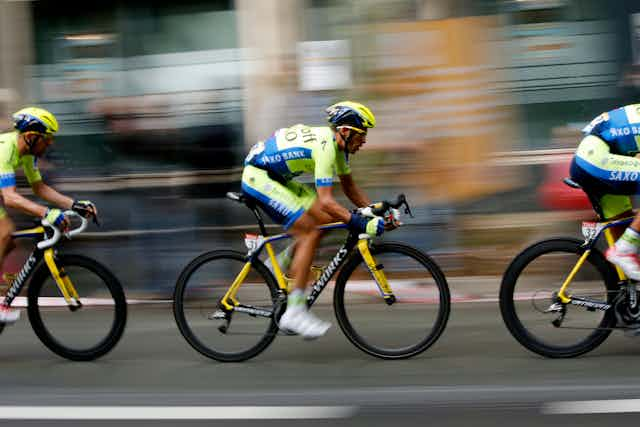
Unofficial rules of the Tour de France matter most
Associate Professor, Centre for Cultural Diversity & Wellbeing, Victoria University
Associate Professor of Sport Ethics, Victoria University
Disclosure statement
Craig Fry is funded by the NHMRC, ARC, and Victoria University. He leads the Culture and Values in Health research program at the Centre for Cultural Diversity and Wellbeing, Victoria University. Craig writes the Australian cycling history pages at Cycling Tips http://cyclingtips.com.au , and the Pushbikewriter column here at The Conversation. He is also a Research Associate of the Institute of Sport, Exercise and Active Living, Victoria University.
Dennis Hemphill was part of a team that had received funding under the Australian Government Anti-Doping Research Program.
Victoria University provides funding as a member of The Conversation AU.
View all partners
Riders in the Tour de France are engaging in a battle of wits as they follow two sets of rules – the official rules and the other set of “unofficial” rules that come with any competitive sporting challenge.
This other set of rules can occur in any sport and is described by Australian philosopher Fred D'Agostino as:
[an] unofficial system of conventions which determine how the official rules of the game will be applied in various concrete circumstances.
This means that while there are important rules in sport that define and regulate particular activities and competitions, they do not fully explain or determine how sport is actually played.
Basically, you don’t learn how to play sport by reading the official rule books. The full truth of how sporting competitions unfold is only revealed in the contest itself.
Seeing the unofficial rules in the Tour
The 2014 Tour de France is just a few stages old, and already we are seeing evidence of the official and unofficial rules of this great race – the Tour on paper versus the Tour on the road.
The first such moment came last Saturday when star sprinter Mark Cavendish crashed and badly injured himself metres from the finish of Stage 1 in Harrogate.
Footage of the incident shows Cavendish using his head to move Australia’s Simon Gerrans and secure a clear run to the finish line. Cavendish later apologised , admitting he caused the crash that brought him and Gerrans down.
The official UCI Discipline and Procedures rules specify penalties for irregular sprinting by riders. The Tour de France race regulations also say:
To ensure that sprints proceed according to regulations, riders who deviate from the line they have chosen will be subject to the penalties provided for in the table of penalties.

So, after viewing the crash video, it may come as a surprise to many that no official penalty for Cavendish’s seemingly reckless behaviour has been forthcoming.
As Gerrans’ post stage comments show, no rider enjoys being on the receiving end of a shunt that costs them a podium place (or worse). Gerrans was extremely diplomatic in his comments after the crash, when he had every right to be otherwise.
But, by the same token, rider protests and official complaints are rare in races such as the Tour.
Few penalties for crashes
And, while there are past examples of similar incidents in Tour de France sprint finishes that have resulted in official penalties ( Mark Renshaw in 2010, Robbie McEwen in 2005), the riders doing the pushing and shoving mostly escape sanctions.
Australia’s most successful Tour de France sprinter, Robbie McEwen, was famous for his physical approach to sprinting , and is still lauded as one of our toughest ever road riders.
The Cavendish/Gerrans crash highlights the fine line that exists between the official rules and the unofficial (yet no less influential) racing etiquette of professional cycling in big races such as the Tour de France.
Being pushed off a wheel or a line in the final run to a stage finish is a common and accepted part of professional cycling. Chances are we will see it again before this year’s Tour is done.
The unofficial rules
If you look closely enough, a host of other unofficial rules and race etiquette becomes apparent every year in the Tour de France.
Some entertaining and informative descriptions of these can be found in past opinion and commentary , sports journalism and in cycling blogs . There have even been books written on the topic.
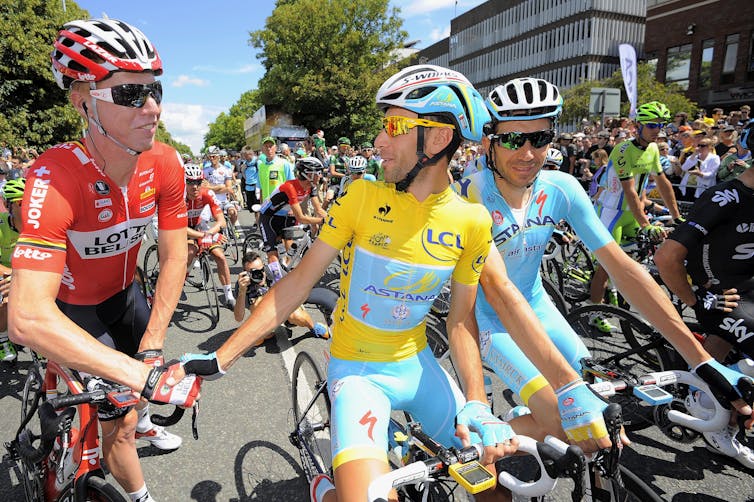
Some of these unofficial rules include:
- don’t attack the yellow jersey (race leader) on the last stage, even if you’re only seconds behind in the general classification
- don’t attack in the feed zone, or during a nature break
- don’t attack the yellow jersey or other contenders if they crash or experience a mechanical incident
- riders can draft behind the team cars or take a “sticky bottle” to get back to the main bunch (especially in the case of a mechanical incident or crash)
- race leaders and the experienced riders in the peloton (main pack of riders) can call a neutralisation or go-slow if race conditions are dangerous
If you doubt these things happen in the peloton, then you only need watch this year’s race. Or consider some of the more famous incidents in professional cycling over the years, for example:
- Criticism of Nairo Quintana after his attack during a neutralised stage of the 2014 Giro d’Italia
- The reaction to Alberto Contador attacking Andy Schleck after his chain slipped during Stage 15 of the 2010 Tour de France
- Jan Ullrich waiting after Lance Armstrong fell during Stage 15 of the 2003 Tour
- Second place GC riders not attacking the yellow jersey on the final stage despite being mere seconds behind (e.g. Cadel Evans 23 seconds to Alberto Contador in 2007, and 58 seconds to Carlos Sastre in 2008).
What is especially interesting is that many of the above unofficial rules are at odds with the written regulations that supposedly govern professional cycling.
Consider the following prohibited behaviours from the UCI discipline and procedures rules :
- irregular sprint in a stage race
- pushing off against car, motorcycle, rider
- cheating, attempted cheating, collusion between riders of different teams
- rider holding on to his team’s vehicle
- sheltering behind or falling into the slipstream of a vehicle
- follower leaning out or holding supplies out of vehicle
- acts of violence among riders, or towards anyone else
Again, you will see all of these in this year’s Tour de France.
Why do these unofficial rules exist?
It may seem strange that a sport like cycling with its long history of cheating of all types (including drug use and doping), also has a strong ethos of honourable racing within the professional peloton.
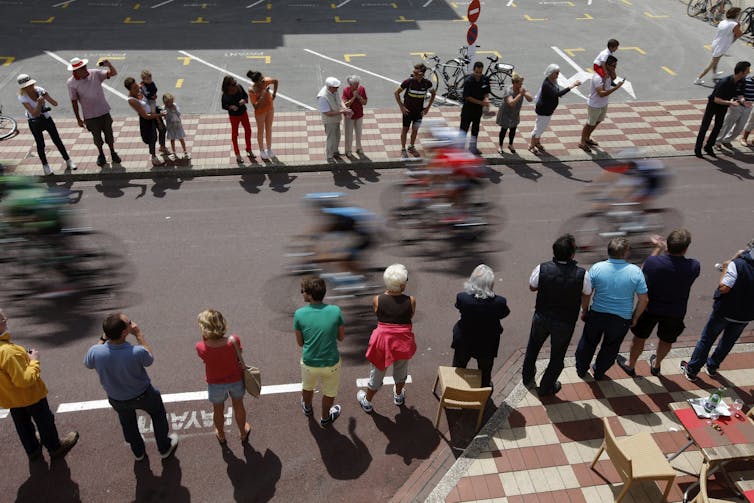
It has been argued that the ethos exists because of the extreme demands and dangers of professional cycling.
[…] merely to survive, the riders had to evolve a way of existing together, competing without putting each other in danger, and without making daily life impossible.
These unofficial rules of professional cycling are therefore an important part of the culture and functioning of this sport. To some extent these are also replicated at its lower levels, even down to the amateur club grades.
Some have even argued that the unofficial norms of cycling can complement the official rules and add to the attractiveness of the contest - especially where official monitoring and sanctioning costs imposed on riders for transgressions are low, or applied inconsistently.
Indeed, so entrenched are some of the unofficial rules that they may be seen by many riders as more legitimate than the official rules (and have a bigger influence on race progression and outcomes).
The strength of these unofficial rules is likely due to the following factors:
- they are made by, implicitly agreed, and explicitly practised by most riders
- these rules allow the riders to govern and control key moments in the race, especially around risks and dangers
- unofficial rules also provide a means by which a kind of natural justice or order of the peloton can be preserved from within
- such rules and race etiquette can build social cohesion in the peloton
So, in the Tour de France each year it is possible to see the influence of unofficial race rules and etiquette on the practice and outcomes of professional cycling.
The irony is the unwritten rules of the Tour may matter more to the riders than the official regulations.
The danger is the cultural processes responsible for producing these examples of in-race etiquette may be the same mechanism by which behaviours such as doping and other extreme forms of cheating develop and become normalised .
More Tour de France coverage on The Conversation .
- Tour de France

Sydney Horizon Educators (Identified)

Senior Disability Services Advisor

Deputy Social Media Producer

Associate Professor, Occupational Therapy

GRAINS RESEARCH AND DEVELOPMENT CORPORATION CHAIRPERSON
- Spring Classics
The Tour De France: 8 Unwritten Rules, Obscure Regulations & Weird Facts!
- Share on Facebook
- Share on Twitter
The Tour de France, the most fantastic race on earth. For the month of July, cycling fans are glued to the action. In this video, we will list a few of the weirder facts you may not know about The Tour de France. We've also enlisted the help of GCN+’s own Cillian Kelly to dive into some of the lesser-known historical facts of this crazy race.
0:00 - Intro 1:12 - Podium dress code 1:36 - Keeping cool 2:11 - Unwritten rules 3:19 - Historical facts 7:23 - Team cars 8:18 - The party stage 9:07 - Time cut 10:07 - Time gaps
Useful Links: GCN+ | Every. Unmissable. Moment. 👉 https://gcn.eu/9jv Download the GCN App for free 👉 https://gcn.eu/app Visit the GCN Shop 👉 https://gcn.eu/french-casuals Join the GCN Club 👉 https://gcnclub.com GCN Training Plans 👉 https://gcn.eu/gcntp
Are you tuning in to the Tour de France? 🚴 Let us know in the comment section below! 💬
Watch more on GCN... 📹 Tadej Pogačar’s Tour De France Training Secrets 👉 https://youtu.be/Hyx49FCjQmY 📹 Watch our Editor’s Choice Playlist 👉 https://gcn.eu/editorschoice 📹 Or why not check out our Features Playlist 👉 https://gcn.eu/gcnfeatures
🎵 Music - licensed by Epidemic Sound 🎵 Whip Whoosh 4 - SFX Producer Accessing the Stratosphere - Christian Andersen Bulking Season - Timothy Infinite Dowel Swishes 11 - SFX Producer Get in Here - Smartface Grand Theft (Instrumental Version) - Katori Walker Prisma - Ben Elson Smokeshow - Jobii Soft Glare - Mar Vei Solid Centre - Dusty Decks Speaker Pop Home 1 - SFX Producer Speaker Pop Home 2 - SFX Producer Too Humid - Dylan Sitts Vice City - Ben Elson
#gcn #cycling #roadcycling #roadbike #bike #bikes #bikelife #tourdefrance #tdf2023 #tourdefrance2023
📸 Photos - © Velo Collection (TDW) / Getty Images & © Sprint Cycling Agency
The Global Cycling Network (GCN) is the largest online cycling channel in the world, bringing together a global community of road cyclists to celebrate everything that’s great about the world of cycling.
Our videos bring fans compelling daily content including expert tutorials, techniques, training, racing, cutting-edge bike tech, unparalleled behind the scenes event coverage, humour, entertainment, and more.
Presented by ex-pro riders, GCN offers a uniquely qualified insight into the world of cycling, and most importantly it’s fuelled by our passionate and enthusiastic fans – everyone who makes up the GCN community. We also bring the latest and greatest tech to your attention, showcase the best places in the world to ride and get exclusive access to events and races.
Welcome to the Global Cycling Network | Inside Cycling
Thanks to our sponsors: Pinarello Bikes: https://gcn.eu/Pinarello Zipp Wheels: https://gcn.eu/Zipp Topeak Tools: http://gcn.eu/Topeak Canyon Bikes: http://gcn.eu/-Canyon Pirelli Tyres: https://gcn.eu/Pirelli Orbea Bikes: http://gcn.eu/Orbea Vision Wheels: http://gcn.eu/Vision Wahoo Fitness: http://gcn.eu/Wahoo-Fitness Park Tool: http://gcn.eu/-parktool Elite Bottles: https://gcn.eu/EliteBottles Whoop Fitness: https://gcn.eu/Whoop Selle Italia: https://gcn.eu/SelleItalia SIS: https://gcn.eu/ScienceInSport Zwift: https://gcn.eu/Zwift Shimano Wheels: https://gcn.eu/Shimano Shadow Stand: https://gcn.eu/ShadowStand DMT Shoes: https://gcn.eu/DMT Silca: https://gcn.eu/Silca MET Helmets: https://gcn.eu/methelmets Strava: https://gcn.eu/strava
Watch our sister channels: GCN Tech - https://www.youtube.com/@gcntech GCN Racing - https://www.youtube.com/@gcnracing Global Triathlon Network - https://www.youtube.com/@gtn GCN Italia - https://www.youtube.com/@gcnitalia GCN en Español - https://www.youtube.com/@gcnenespanol GCN auf Deutsch - https://www.youtube.com/@gcnaufdeutsch GCN en Français - https://www.youtube.com/@gcnenfrancais GCN Japan - https://www.youtube.com/@gcnjapan GCN Training - https://www.youtube.com/@gcntraining Global Mountain Bike Network - https://youtube.com/@gmbn GMBN Racing - https://youtube.com/@gmbnracing GMBN Tech - https://www.youtube.com/@gmbntech Electric Mountain Bike Network - https://www.youtube.com/@embn
Latest Videos
1 7 Easy Exercises To Make You A Stronger Cyclist

2 We Found The Hottest Tech at Sea Otter 2024 | Episode 1

3 Why Do-It-All Bikes Are The Future | GCN Tech Show 330

4 How To Stop Getting Numb Hands On The Bike

5 5 Tips for Building Endurance | Getting Ready for Epic Rides

More GCN videos

7 Easy Exercises To Make You A Stronger Cyclist
Are you looking to improve your performance, mobility and endurance on the bike? Whilst we all love to be in the saddle, it's also important to do some work off the bike in the gym as well. Hank has teamed up with a personal trainer to show you some easy ways to build up your strength on the bike, off the bike.

How To Stop Getting Numb Hands On The Bike
Have you ever had numb hands while cycling? It can be VERY uncomfortable. So if you join us in saying yes, then you're in the right place! In this video we are going to give you our top tips for preventing numb hands!

5 Tips for Building Endurance | Getting Ready for Epic Rides
Whether you're a seasoned cyclist or just starting out, these five essential tips will help you boost your cycling endurance and prepare you for more epic rides!

Why Do Cyclists Keep Getting Banned? | The GCN Show Ep. 588
No - we're not talking about doping - but every day cyclists who are being banned from roads and whole areas... In this week's show, Dan and Si are back to ask 'why?'.
Subscribe to the GCN Newsletter
Get the latest, most entertaining and best informed news, reviews, challenges, insights, analysis, competitions and offers - straight to your inbox
Tour de France Guide
Regulations of the tour.

Overall ranking

The general overall individual time ranking is established by adding together the times achieved by each rider in the 21 stages.
Points ranking

The individual points ranking is obtained by adding together the points recorded in the individual rankings for each stage, according to the following tables:
Best climber ranking

The best overall climber ranking is established by adding together the points obtained on all passes or climbs, based on the following tables:
Summits that lie within the second half of a stage, and that are over 2,000 metres, earn double the points for the mountains classification.
In addition to points for the mountains classification, certain summits bring time bonuses for the general classification: each of these locations is known as a "Bonus Point".
Irrespective of the category of the climb, a Bonus Point offers -8, -5 and -3 seconds to the first 3 at the summit
Young rider ranking

The young rider classification is reserved for riders aged 25 or under. The one that is best ranked in the general classification on time is the daily leader of the young riders. At the end of the last stage, he is declared winner of the young rider classification.
Ranking by team

The general overall team ranking is established by adding together the three best individual times of each team in all stages.
Combative ranking

In games, by contrast to reality, the most combative is not designated by a jury. It is the rider who has cycled the most kilometres at the head of the race. The most combative is the rider who has cycled the most during a Tour de France.
Stage rankings

At each stage (apart from the time trial stages), the first 3 win time bonuses: -10, -6 and -4 seconds.

The Tour de France for Dummies
It's the biggest event in cycling, one you won't want to miss, so here's everything you need to know ahead of the Tour!
Words: Josh Warner

Image: Wikimedia Commons/Anthospace
T he biggest cycling event of the year; if you’ve only heard of one race, it’s this one. Three weeks zig-zagging France. From the barren plains of Bordeaux to the asphyxiating altitude of The Alps - Across the Ardèche and through the jagged Jura mountains - The Tour de France is the ultimate test of endurance, tactics, and teamwork; it’s the one race everyone dreams of winning.
But how does this spectacle work? Why is The Tour de France starting in Denmark?! And why has Mark Cavendish never won the race, despite being ‘the fastest man on two wheels’? In this piece, I’ve strived to answer some of the most common questions around this most peculiar sporting spectacle.
Q. What is The Tour de France?
The Tour de France is a 3353-kilometre, three-week long bike race held predominately (although not entirely) in France, from the 1st to the 24th of July. These 3353 kilometres are split into 21 stages, that range from 13, to 220 kilometres long. Sounds tough, right? The organisers are generous enough to include three rest days, one on each Monday - so don’t tune in then, there will be nothing on!
Q. How do you win The Tour de France?
This isn’t as simple as it may first seem. Unlike, say Formula One, which is held over a similar number of ‘stages’ albeit across the year, you do not win by collecting the most points. Instead, you want the lowest time possible for each stage. Finish first in every stage and then lose an hour on the final day? You won’t be winning the overall. The rider with the lowest combined time across all 21 stages will win the coveted Yellow Jersey.
Q. Why is The Tour de France starting in Denmark?
Cycling is nothing if not inconsistent. Every year, The Tour hosts a ‘Grand Depart’ (literally ‘great departure’), complete with dignitaries and the accompanying pomp. There’s lots of flag waving and pretty, panoramic helicopter shots of the area.
Through this extended coverage, comes extended exposure, and, being a race broadcast around the world, a ‘Grand Depart’ can act as one massive tourism campaign. As such, tourism boards spend millions of pounds on the rights to host these three stages. This year, the three Danish stages have cost a reported 12 million Euros.
Q. Why hasn’t Mark Cavendish won The Tour de France?
Mark Cavendish is undoubtedly the greatest sprinter of all time. He’s won 34 stages of The Tour across nine editions. And yet his highest finish in this race is 130th, in 2011. Why?
Very broadly, there are two types of riders in The Tour; climbers, and sprinters. Sprinters train for very short efforts in the last few hundred meters of a stage to cross the line first. The gaps between riders after these efforts is negligible. Climbers, on the other hand, train for very long efforts - often over an hour - up some of France’s steepest ascents. The very nature of these efforts means any differences between riders is exacerbated. Cavendish, being a sprinter, wins sprints, but not by enough to offset time lost on long mountain efforts.
Q. Why is it a team sport? There’s only one winner?
Cycling, on the face of it, appears to be a solo endeavour. Only one rider can cross the finish line first, and only one can wear the Yellow Jersey on the Podium. But teammates provide valuable assistance in the race to Paris. ‘Domestiques’ (literally servants) block the wind and create a slipstream effect for the riders behind, allowing the team leaders to save valuable energy for later on in the stage, or race. Just one rider in front of you can save you thirty percent of your energy!
Domestiques also perform a plethora of day to day roles: from ferrying water to and from the team cars, to being the first on hand should a puncture or crash occur, and even attacking off the front themselves to ease the pressure on their leaders.
Q. Why do some riders have different coloured jerseys?
There’s four main jerseys up for grabs in The Tour de France. The most famous and sought after is the Yellow Jersey for race leader. The Yellow Jersey is awarded to the rider who has completed the race in the shortest possible time, and can change every single day. The Green Jersey is the ‘points’ jersey. This works like a condensed season of Formula 1, with each stage awarding points for 1st, down to minor positions. Most points at the end wins the jersey.
The Polka Dot Jersey is for the ‘King of the Mountains’. Points are awarded at the top of each mountain in the race, for the first few over them. Most points wins. Finally, The White Jersey is for the best young rider in the race. This follows the same rules as the Yellow Jersey, but I reserved for those under 25.
You may also see some other ‘non standard’ jerseys about, these are national, continental, or even world champions who get to denote their status with special coloured kit.
Q. What is a peloton?
Whilst watching the Tour de France, you’ll encounter a plethora of new, weird, words and phrases associated with bike racing. Here’s a few of them and their meanings:
Peloton - literally ‘pack’. The name given to the largest group of riders on the road.
Breakaway - a group of riders in front of the main peloton. Cycling is all about getting your sponsors on television, and this is a sure fire way to do just that. The riders in the breakaway rarely win, but victory is not the only motivation.
Lanterne Rouge - the rider who is last in the standings for the Yellow Jersey. The phrase comes from the red lights present at the back of trains in France.
Flamme Rouge - a flag that denotes the riders have entered the final kilometre of the race.
Col/Alp/Mur/Côte - a climb. The French have numerous words for ‘climb’ depending on where they are in France amongst other factors, but they all mean the same thing.
Q. Is there a women’s Tour de France?
Yes! After much pressure from the cycling community at large, the ‘Tour de France Femmes’ has finally been revived for 2022 after a 13 year hiatus. The race runs right after the men’s race concludes, from the 24th to 31st of July.
So, there you have it. Hopefully I’ve managed to clear up some of the questions you may have in regards to The Tour de France, and bike racing more generally. There’s a whole world of tactics, superstition, and spectacle to any bike race - but The Tour de France is a good starting point for those new to the sport.

Calculators
Running events, running articles, triathlon events, cycling events, triathlon articles, cycling articles, fitness events, fitness articles, sports events, outdoor events, sports articles, nutrition articles, health & injury articles, rules to ride by at the tour de france.

Obviously, a race like the Tour de France has a number of rules and regulations governing its running. A lot are totally mundane, but a few are of interest to the cycling aficionado. We will explore a few of these here.
The time cut is of critical importance to all riders, especially those who are gravitationally challenged. The Tour organizers classify each stage into five different categories and determine the time cut based on the category and average speed of the stage. Riders wishing to stay in the race must finish within a certain percentage of time from the stage winner. The five categories and their cutoff percentages are:
- 4 percent if the average speed of the winner is 21mph (34kmh) or less
- Up to 12 percent if the average speed of the winner is greater than 30mph (48kmh)
- 6 percent if the average speed of the winner is 19mph (31kmh) or less
- Up to 18 percent if the average speed of the winner is greater than 26mph (42kmh)
- 5 percent if the average speed of the winner is 15mph (26kmh) or less
- Up to 18 percent if the average speed of the winner is greater than 24mph (38kmh)
- Must be within 25 percent of the winner's time
- Fifth man crossing the line must be within 25 percent of winning team's time
More: How Watching the Tour de France Might Make You Faster
About the Author

- Share full article
Advertisement
Supported by
Sports of The Times
At Tour de France, Rules of the Road Are Often Unspoken
No breakaways in tunnels and stop when the leader stops: guidelines keep the peace (but not always).

By Michael Powell
LIMOUX, France — On a muggy morning before another 115-mile race through the Pyrenees, the cyclist George Bennett peered at a few of us sweaty fourth-estate types, shrugged and said, “Looks like I have become a domestique.”
Bennett, a 29-year-old from New Zealand, is one of the best professional cyclists in the world, so to hear him talk of taking on the role of domestique — servant — in the late stages of the Tour de France is a bit like hearing the N.B.A.’s James Harden declare he has decided to close out the season as a defensive-minded role player.
The tousle-haired Bennett was expected to compete this year for the maillot jaune , the yellow jersey worn by the Tour’s leader. But in the course of this 2,200-mile race across France, he endured mishap piled atop miscalculation and fell out of contention. So he has accepted his fate and will spend the rest of the Tour, which has curled into the lung-burning high reaches of the Alps, lugging water and clearing space for his Jumbo-Visma teammates.
In the language of cycling, this alpha rider has become a domestique.
To ride in the slipstream of this grandest of cycling races for two weeks is to learn language, customs and rules no less powerful for being unspoken, to step inside a private club as I write as a bit the novice myself. (O.K., “a bit the novice” might understate matters in the eyes of hard-eyed riding sorts, who have complained that I referred in an earlier column — la scandale! — to the “cylinder” of the bicycle as opposed to the top bar. I will console myself this evening with an extra glass of a fine Alpine wine.)
Each of the Tour’s 22 teams has five or six domestiques, men whose job it is to sacrifice for the greater glory of their team’s lead cyclist. The term is an example of a curious upstairs-downstairs argot in what is at its core a working-class sport.
Domestiques provide wind-cover, going out in front of a team’s leading rider for long stretches and allowing him to conserve strength. The domestique also fetches water and food for teammates from the team cars that accompany the field, and even cannibalizes his own bike — or, in a worst-case situation, surrenders it — in service to the team’s alpha rider.
“The roles are pretty clear, and they have to be because otherwise everyone thinks they could win the tour and you lose your team structure,” Tony Martin, another fine cyclist with Jumbo-Visma told me. “And that becomes dangerous.”
Having disposed with roles, let’s move to the unspoken rules. Some are a vestige of a more genteel time, and a few have slid into history’s shadow. Once it was considered bad form to make a breakaway in a tunnel, though that is no longer forbidden. And if the peloton passed through the town or village of one of their own, the native son was given the brief honor of the lead.
Others remain ironclad. France’s Julian Alaphilippe is the 27-year-old sensation of this race, and with his explosive forays through the Alsace-Lorraine, the Massif Central and then down into the Pyrenean foothills he remains the cyclist with the best cumulative time. That lead comes accompanied by privileges.
When Alaphilippe decides he needs to take a nature break — the term of art for emptying his bladder — the peloton either stops and takes its own or slows enough to give him time to catch up. A television viewer can hazard a guess as to the timing of nature breaks as the NBC announcers cut away from the race and begin to rhapsodize about a particularly handsome château. Taking advantage of such a moment to attack is still considered bad form, and can result in a scolding on wheels. (Caveat: Should the need for a nature break arrive toward the frenetic end of a day’s racing, the biker just takes care of business as he pedals.)
To police these rules, spoken and not, it falls to the dominant riders to play hall monitor for the peloton. Earlier this week, two rivals got into it , jockeying for position as they raced from Pont du Gard, the Roman aqueduct in Provence, to the Alpine town of Gap. Temperatures had reached 105 degrees and the riders — both of whom carried reputations in the peloton as good guys — had grown tetchy. Alaphilippe pushed forward and advised them to knock it off.
“Maybe they were scared I was going to attack, so I just tried to calm them down,” he said. “I told them not to take any risks. I wasn’t going to attack.”
Race officials bounced the quarrelsome riders, including Jumbo-Visma’s Martin, from the Tour anyway, and levied big fines in what felt like a great overreaction given the brain boil temperature.
“We’ve gotten to the point in the race,” one coach told me in Nimes, “where everyone is exhausted and sick of everyone else. Even on the team bus, you have to be very, very careful what you joke about.”
There is, too, the question of injuries — the broken bones, torn tendons and broken teeth — and in cycling language the strange pejorative that accompanies it. The Tour is a cross between a marathon and a Formula One race. Most often, riders who fall crawl off the ground, spray antibiotic cream on road rashes and hop back on their bikes. But those who break bones or get concussed must withdraw.
Such injured cyclists are said — in Tour speak — to have “abandoned” the race, which carries a soupçon of disapproval.
This year’s Tour offered an exception: Last week, Rohan Dennis, one of the best time-trialers in the world, paused at a feed stop, put down his bike, and simply walked away . No mas, over and out, où est l’aéroport?
There were rumors Dennis was unhappy with his bike, with his team, perhaps even with the quality of his spandex. (Real rumor.) He’s not talking specifics and, at the least, we can safely say that he “abandoned” the race.
Others will soldier on, not least the alpha who ended up a domestique.
“I just have to deal with it and put effort into someone else’s race,” Bennett said of his final week in the Tour. “I worked as a domestique early in my career. So, I guess ….”
His voice trailed off.
“I can’t say I like it,” he added, “but that’s racing.”
Michael Powell is the Sports of The Times columnist. A native New Yorker, he joined The Times in 2007. He was part of teams that have won a Polk Award and a Pulitzer Prize. More about Michael Powell
Cycling Around the Globe
The cycling world can be intimidating. but with the right mind-set and gear you can make the most of human-powered transportation..
Are you new to urban biking? These tips will help you make sure you are ready to get on the saddle .
Whether you’re mountain biking down a forested path or hitting the local rail trail, you’ll need the right gear . Wirecutter has plenty of recommendations , from which bike to buy to the best bike locks .
Do you get nervous at the thought of cycling in the city? Here are some ways to get comfortable with traffic .
Learn how to store your bike properly and give it the maintenance it needs in the colder weather.
Not ready for mountain biking just yet? Try gravel biking instead . Here are five places in the United States to explore on two wheels.
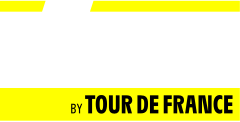
Rules And Regulations
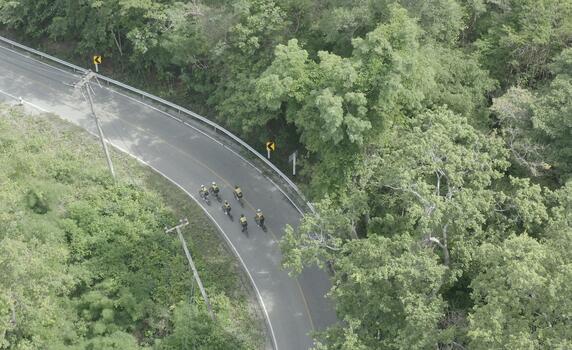
Regular Rider Regulations
1. All riders must wear a helmet at anytime they ride on their bicycle.
2. All riders must put on race numbers properly on their jersey and bicycle.
3. Riders are not allowed to get supports from any of non-staff person.
4.To visit feed stations, rider MUST stop and get in the station. (WAVE 0 may has it's own system depend on race technical committee)
5. Extension bar such as aero bar/ bar end are not allowed.
7. Bicycle with additional driving system such as ebike are not allowed.
8. This event's regulations are under supervision of UCI and Thai Cycling Association.
9. Rider MUST read and attend technical briefing before the race day.
Awaids Winning Rules
General Classification Winner
The firset male and female rider who cross the finish line will be the winner for General Classification and awarded with Tour de France's yellow jersey.
King Of Sprint Classification
The fastest total time of male and female rider during King Of Sprint segment will win KOS Challenge and awarded by Tour de France's green jersey.
If 2 riders have the same amount of time, a better ranking in General Classification rider will win.
King Of Mountain Classification
The first male and female rider who cross the KOM point will win this classification and awarded by Tour de France's polka dots jersey.
Best Young Rider Classification
The first male and female rider age under 25 who cross the finish line will win Best Young Rider classification awarded by Tour de France's white jersey.
L'Etape Championship Invitation
Top 3 male and female riders from a long course will be invited to join the next L'Etape Championship in L'Etape Du Tour.
The Enlightened Mindset
Exploring the World of Knowledge and Understanding
Welcome to the world's first fully AI generated website!
How to Qualify for the Tour de France: Training, Endurance, and Teamwork
By Happy Sharer
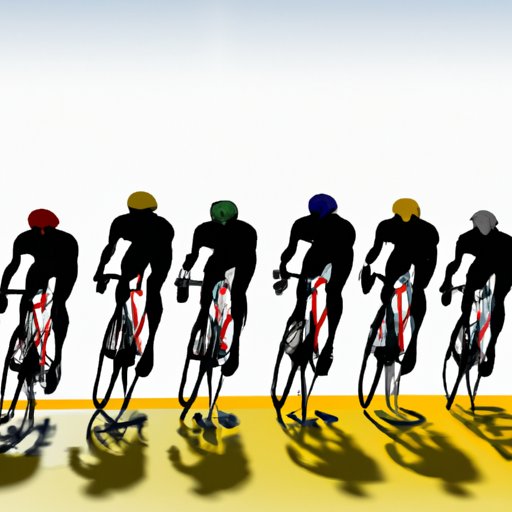
Introduction
The Tour de France is one of the most renowned cycling races in the world. It is a grueling three-week event that takes place every summer in France. This year, the race will span 2,000 miles (3,218 km) across 21 stages as cyclists battle it out for the yellow jersey. Each stage presents its own unique challenges and riders must have the physical and mental fortitude to endure them all. The Tour de France is an event that is reserved only for the best cyclists in the world. In order to compete, riders must meet certain requirements and demonstrate their ability to compete at the highest level.
This article examines the steps that riders must take in order to qualify for the Tour de France. We will look at the importance of physical fitness and team building, as well as strategies for increasing endurance and participating in qualifying races. By the end of this article, you should have a better understanding of what it takes to compete in the Tour de France.
Train Hard and Consistently
The first step to qualifying for the Tour de France is to train hard and consistently. Cyclists must be in peak physical condition in order to complete the race. This means engaging in regular workouts and having a balanced diet. Additionally, riders must focus on specific areas such as strength and endurance. Regularly competing in smaller races can also help riders improve their performance.
Importance of Physical Fitness
Physical fitness is essential for any cyclist who wishes to compete in the Tour de France. As the race spans over three weeks, riders must have the stamina to last the entire duration. This means that they must train regularly and push themselves to the limits. Additionally, riders will need to have excellent cardiovascular health in order to cope with the rigors of the race. Furthermore, riders must have strong legs and core muscles in order to handle the hills and mountains that often appear in the race.
Training Tips
In order to stay in peak physical condition, riders should engage in regular training sessions. This includes interval training, which involves short bursts of intense activity followed by periods of rest. Additionally, riders should focus on developing their aerobic capacity by taking part in long rides at a steady pace. Finally, riders should also incorporate strength training into their routine in order to build up their leg muscles and core.
Have a Good Support Team
Having a good support team is essential for any cyclist attempting to qualify for the Tour de France. A good team will provide the rider with the necessary resources and support in order to prepare for the race. This includes providing access to training facilities, coaches, nutritionists, and mechanics. Additionally, having a good team can provide moral support and camaraderie, which are both essential for any athlete.
Benefits of Having a Team
Having a good support team can provide many benefits to a cyclist attempting to qualify for the Tour de France. Not only do they provide the necessary resources, but they also provide moral support and camaraderie. Additionally, having a good team can help to reduce stress and give the rider a sense of purpose. Finally, teams can provide valuable feedback on the rider’s performances and offer advice on how to improve.
Finding the Right Team
In order to find the right support team, riders should research different teams and assess their levels of commitment and resources. Additionally, riders should look for teams that have had success in the past. Finally, riders should make sure that the team’s values align with their own in order to ensure a successful partnership.
Build Up Your Endurance
Building up endurance is essential for any cyclist attempting to qualify for the Tour de France. Riders must be able to last the entire duration of the race, which means that they must have excellent stamina and endurance. There are several strategies that riders can employ in order to increase their endurance.
Strategies for Increasing Endurance
Riders can employ several strategies for increasing their endurance. One strategy is to gradually increase the intensity and duration of their workouts. Additionally, riders should focus on eating a balanced diet and getting plenty of rest. Finally, riders should also incorporate cross-training into their routine in order to strengthen other muscles and increase their overall stamina.
Understanding Your Limits
It is important for riders to understand their own limits when it comes to building up their endurance. Pushing yourself too hard can lead to injury or burnout. Therefore, it is important to listen to your body and take breaks when needed. Additionally, riders should be aware of the signs of fatigue and adjust their training accordingly.
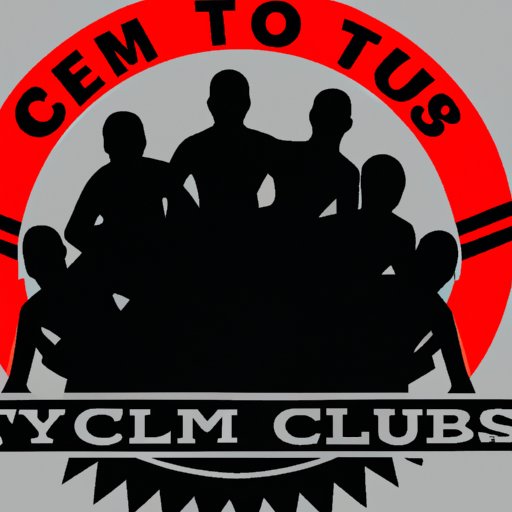
Join a Professional Cycling Team
In order to qualify for the Tour de France, riders must join a professional cycling team. Professional teams provide riders with the resources and support necessary to compete at the highest level. Additionally, joining a professional team can open doors to other opportunities and provide riders with invaluable experience.
Benefits of Joining a Team
Joining a professional cycling team can provide riders with several benefits. These include access to top-level training facilities, experienced coaches, and access to sponsorships. Additionally, joining a professional team can provide riders with the opportunity to participate in prestigious events and gain valuable experience. Finally, riding for a professional team can also open up doors to other opportunities such as endorsements and media appearances.
Locating a Suitable Team
In order to find a suitable team, riders should research different teams and assess their levels of commitment and resources. Additionally, riders should look for teams that have had success in the past. Finally, riders should make sure that the team’s values align with their own in order to ensure a successful partnership.
Participate in Qualifying Races
In order to qualify for the Tour de France, riders must participate in qualifying races. These races are designed to test riders’ abilities and determine whether or not they are ready for the Tour de France. Additionally, these races also provide riders with the opportunity to gain valuable experience and exposure.
Types of Qualifying Races
There are several types of qualifying races that riders can participate in. These include road races, time trials, and mountain stages. Additionally, riders can also participate in national championships, which are used to select the best riders from each country. Finally, riders can also participate in Grand Tours, which are multi-stage races that take place over several days.
Preparing for Races
In order to prepare for qualifying races, riders should focus on honing their skills and increasing their endurance. Additionally, riders should also focus on their diet and make sure that they get plenty of rest. Finally, riders should also practice their race tactics and strategies in order to increase their chances of success.
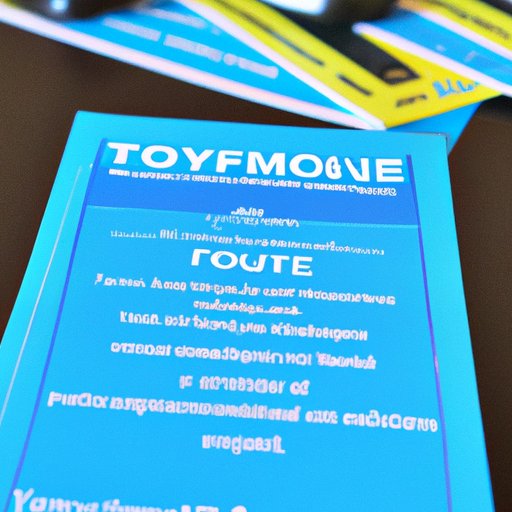
Follow Official Tour de France Rules and Regulations
In order to qualify for the Tour de France, riders must adhere to the official rules and regulations set forth by the race organizers. These include regulations regarding doping, equipment, and safety. Additionally, riders must also be familiar with the race’s course and the various stages.
Familiarizing Yourself with the Rules
In order to familiarize yourself with the Tour de France rules and regulations, riders should read the official race handbook. Additionally, riders should also attend meetings and seminars hosted by the race organizers. Finally, riders should also consult with experienced cyclists and coaches in order to gain a better understanding of the rules.
Adhering to the Rules
Once riders are familiar with the rules and regulations, they must adhere to them. This includes following the doping guidelines and using the appropriate equipment. Additionally, riders must also follow the safety regulations set forth by the race organizers. Finally, riders must also follow the course directions and pay attention to the various stages.
Qualifying for the Tour de France is no easy task. It requires intense physical training, endurance, and team building. Riders must also familiarize themselves with the rules and regulations set forth by the race organizers and adhere to them. Additionally, riders must also participate in qualifying races in order to demonstrate their abilities. By following these steps, riders can increase their chances of qualifying for the Tour de France.
Summary of Main Points
In order to qualify for the Tour de France, riders must train hard and consistently, have a good support team, build up their endurance, join a professional cycling team, participate in qualifying races, and follow the official rules and regulations. By following these steps, riders can increase their chances of qualifying for the iconic event.
Final Thoughts
Qualifying for the Tour de France is a difficult process, but it is certainly attainable with hard work and dedication. Riders must focus on their physical fitness, team building, and endurance in order to be successful. Additionally, riders must also familiarize themselves with the rules and regulations set forth by the race organizers and participate in qualifying races. With the right preparation and commitment, riders can increase their chances of qualifying for the Tour de France.
(Note: Is this article not meeting your expectations? Do you have knowledge or insights to share? Unlock new opportunities and expand your reach by joining our authors team. Click Registration to join us and share your expertise with our readers.)
Hi, I'm Happy Sharer and I love sharing interesting and useful knowledge with others. I have a passion for learning and enjoy explaining complex concepts in a simple way.
Related Post
Exploring japan: a comprehensive guide for your memorable journey, your ultimate guide to packing for a perfect trip to hawaii, the ultimate packing checklist: essentials for a week-long work trip, leave a reply cancel reply.
Your email address will not be published. Required fields are marked *
Expert Guide: Removing Gel Nail Polish at Home Safely
Trading crypto in bull and bear markets: a comprehensive examination of the differences, making croatia travel arrangements, make their day extra special: celebrate with a customized cake.

Extra services
- Presentation
- Host cities
- The comitted étape
- Etape series
- Regulations
- Tours Operators
- Charity bibs
- Training plans
- VIRTUAL L’ETAPE DU TOUR DE FRANCE BY ZWIFT
- Village infos
- Collect race number
- Mechanical assistance
- Luggage storage
- Plan your stay
- Photos / videos
SPORTS RULES OF THE 2022 l'éTAPE DU TOUR DE FRANCE
Recovery During the Tour de France Is a Top Priority for the Pros. Here’s How They Do It.
We take a detailed look at pros’ methods for maintaining stamina during a stage race like the Tour.
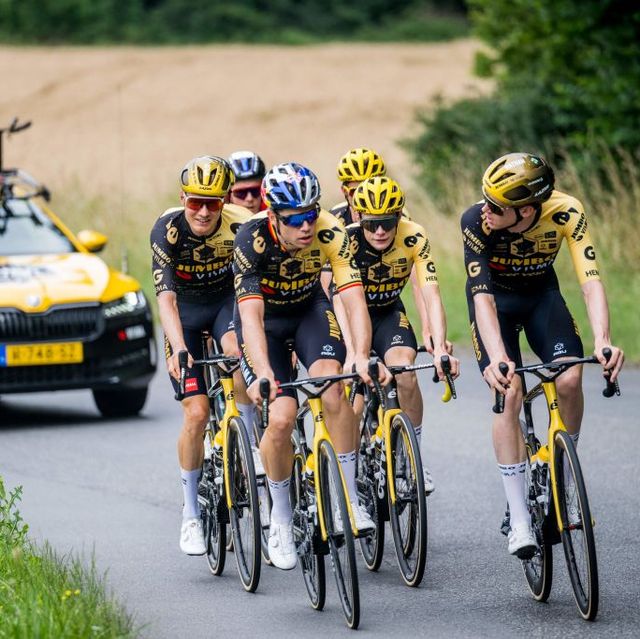
So, we dug into how top cyclists get through those long weeks of racing by picking the brains of pro team staff members and pro cyclists themselves. Even if you don’t have a stage race on the schedule, you can learn from the pros’ recovery tactics—plus, it’s fun to find out what exactly happens after a stage finish.
Rehydrate and Refuel
If you watch the finish line of any stage, you’ll notice that soigneurs (those team staffers at the finish line) are quick to pass bottles to the riders as they cross the line. Often, they’re filled with a carb-based sports drink that includes protein in it, though some may contain straight water or just electrolytes , depending on the rider’s preference (and how nauseous they are post-sprint).
When the next race is less than 24 hours away, immediately getting hydration and fuel back in the tank is vitally important, says Human Powered Health’s dietitian Mathis Fluit. Since races like the Tour require switching hotels almost every stage, meaning the riders won’t have immediate access to their rooms, riders will often have another meal or hefty snack , like rice and chicken or granola and yogurt , on the team bus heading back to the hotel.
Spin the Legs Out Immediately
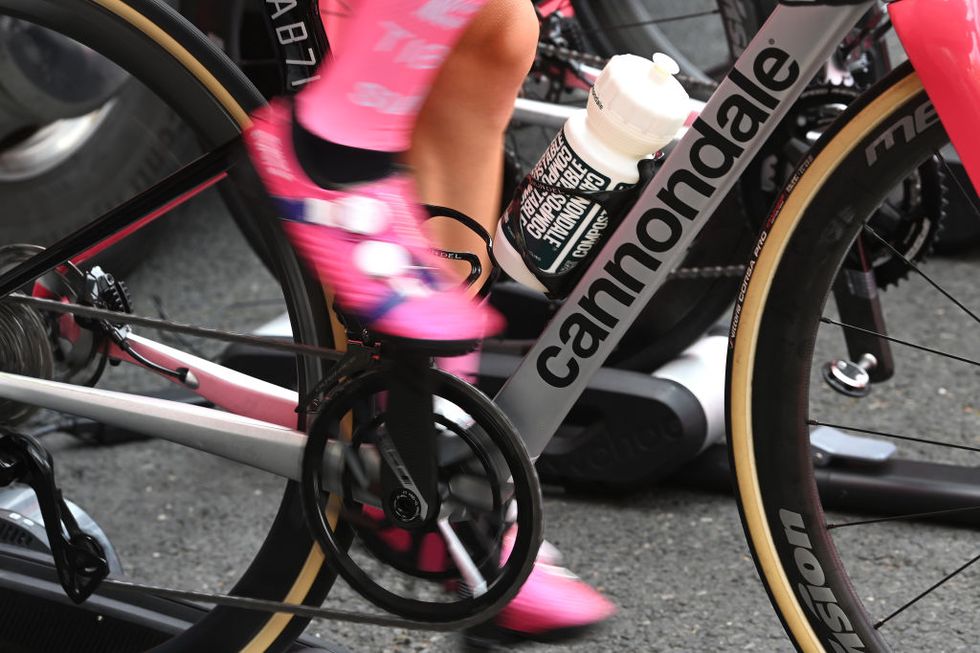
You may have seen riders get back onto their bikes after finishing a stage—on stationary trainers or rollers , that is. And you might be wondering why the heck riders are finishing 100-plus mile stages and then getting onto stationary trainers or rollers . It seems like they’ve already ridden enough, right?
But as Human Powered Health’s pro rider, Marjolein van’t Geloof, who’s a physiotherapist in addition to being a WorldTour bike racer, explains, often riders finish with a sprint , so they actually need a few minutes to cool down and prep their legs for another day of racing—an easy session on the trainer will do that.
“It’s really important to get on rollers and spin out your legs , just for 10 to 15 minutes,” she says. “You’re helping your legs flush the lactate out and set yourself up to feel better the next day.”
Team buses are often equipped with a shower, so riders are able to quickly clean up and get changed after a stage—important for hygiene and avoiding saddle sores , which is critical for getting through a multi-week race.
Canyon//SRAM’s Alice Towers says that once racers get to the hotel postrace, the team staff will have already checked in for riders and put suitcases in their respective rooms. That often means riders head straight to their rooms to relax, snack , take a longer shower, or have a nap .
Eat All the Carbs
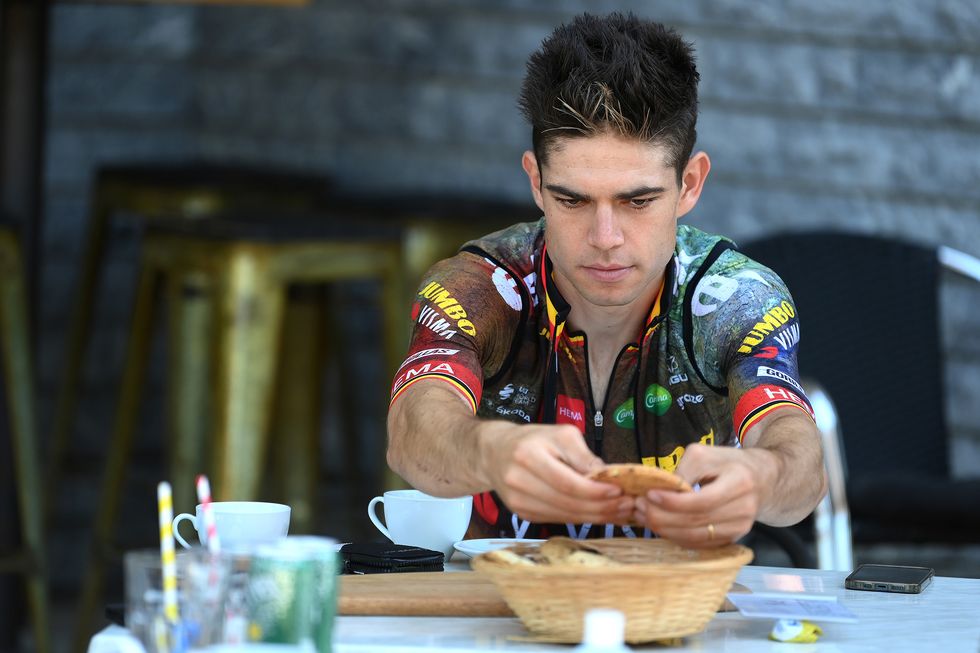
Riders need to be eating steadily throughout the day, on and off the bike, says Fluit. Most of their calories will come from simple carbs , typically in the form of white rice, pasta, and oatmeal.
Riders limit fiber , and because of that, vegetables like broccoli will only appear in small quantities at night. Typically, both right after the race and dinner later on include rice- or pasta-based meals, often with chicken or red meat as the protein source . “It’s not necessarily even tomorrow that riders need to worry about when it comes to eating. They’re thinking about seven stages from now,” says Fluit. “If you’re low on calories or carbohydrates for one day, that’s going to catch up with you after a few days.”
Get in Protein, Too
Cyclists push their muscles to their absolute limit in a race like the Tour de France, and that means recovery requires protein in order to repair that damaged tissue. There’s an endurance athlete cliché of chicken breasts and rice for every meal, and it’s surprisingly accurate if you look at how Tour racers eat the night after a stage. They’ll also be drinking protein in their recovery shakes —usually between 20 and 30 grams in a bottle, along with carbohydrates and electrolytes—says Fluit.
Plan on Early Bedtimes
“The main thing for recovery is just getting as much sleep as you can possibly get,” says Phil Gaimon, former WorldTour pro and host of his new podcast, Watch the Tour de France with Phil Gaimon. “All of the extras like ice baths and massage are great. But nothing is better than an extra 15 minutes of sleep. Racers know that and so they're focused on getting to bed as early as possible.” Because of this, many riders travel with their own pillows, eye masks, and ear plugs—and are also just great sleepers!
Limit Social Media
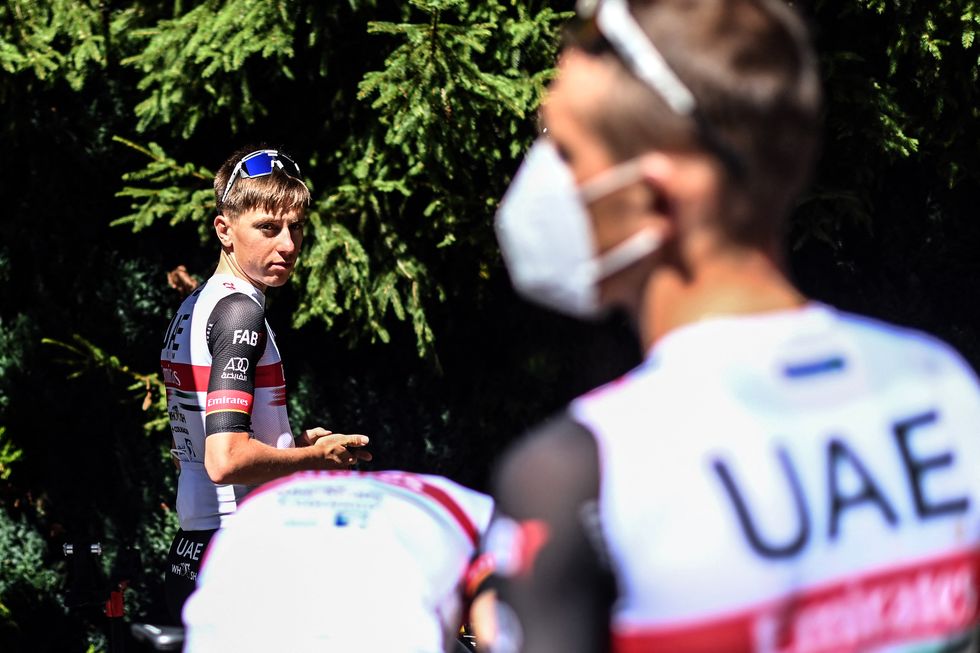
Some riders are fine scrolling the Twitter comments (*shudder*). Others prefer to keep their phones on airplane mode. But for the most part, riders have a routine with how they treat newsfeeds and social media during these races. “I avoid checking any news about the race,” says Canyon//SRAM’s Kasia Niewiadoma. “I like to be as minimally distracted as possible, because I know that the more I read, the more stories that are created in my head and the more I’m thinking about it. And that just keeps me awake at night. We talk about the race at the team meeting, of course, but I don't want to do any extra investigation around it.”
Take an Ice Bath
Tadej Pogačar made headlines this year with his speedy postrace ice baths, but he’s not the only one who relies on them.
“I was always a big fan of the ice baths , which the team didn’t enable at all back then,” Gaimon says. “I’d have to make eight laps of taking the ice bucket from the hotel to my bathtub. And eventually, my teammates would also want to use the bathtub after me! It definitely helps after a hot stage. It reduces your inflammation and relaxes your central nervous system. I would always sleep better if I did the ice bath. And I see a lot of racers doing it now.” (Gaimon later created IceLegs in order to make cooling off easier for riders.)
Get a Massage

The WorldTour teams all have team physiotherapists, massage therapists, or soigneurs on staff to help riders recover faster with daily massage after each stage. “It’s the best part of the day!” says Canyon//SRAM’s Elise Chabbey, who’s also an M.D. “Most riders will get a massage, but the type of massage depends on what’s happening the next day. If the next day’s stage is not so important, the therapist can really push on the legs to try to release the muscles. But if the next day is really important, they’ll be a bit more gentle. It’s a really nice time during the hectic week: It’s a moment where you can really relax and think about something else and talk about something else.”
Set Yourself Up at Night to Ride in the Morning
Remember how Gaimon mentioned getting as much sleep as possible? That means having everything ready to roll for the next morning: Kit laid out, knowing exactly what you’re having in terms of coffee and breakfast —anything that buys you a few more minutes of sleep in the morning.
“If we had to have bags out of the room and be at breakfast at 8 a.m., I would have all my stuff packed and ready to go with my alarm set for 7:55 and literally roll out of bed and into the breakfast room,” he says.
Spin on Rest Days

You’d think on a rest day , riders really, really wouldn’t want to pedal their bikes. And yes, some will skip the ride in order to allow minor irritations, like saddle sores or road rash from a crash to heal, but many will opt for a very relaxed-paced spin to flush out the legs. These rides are short and social—and as Gaimon notes, many teams will use them as a chance to do events with sponsors.
Riders will spend most of their rest days with legs up, relaxing and (no surprise here) eating.
Find a Way to Mentally Bounce Back
The top-level pros don’t get where they are by bemoaning a race gone wrong. As any pro cyclist will tell you, you lose many, many more races than you win. That means if a stage doesn’t go according to plan, you discuss it with the team at the evening team meeting, then you move on.
“To be honest, all the bad days make me more motivated and stronger,” says Niewiadoma. “You learn from races, and when you make a mistake, you really don’t want to find yourself in that position again. So that makes you want to be better the next day.”
Get Comfortable With Monotony
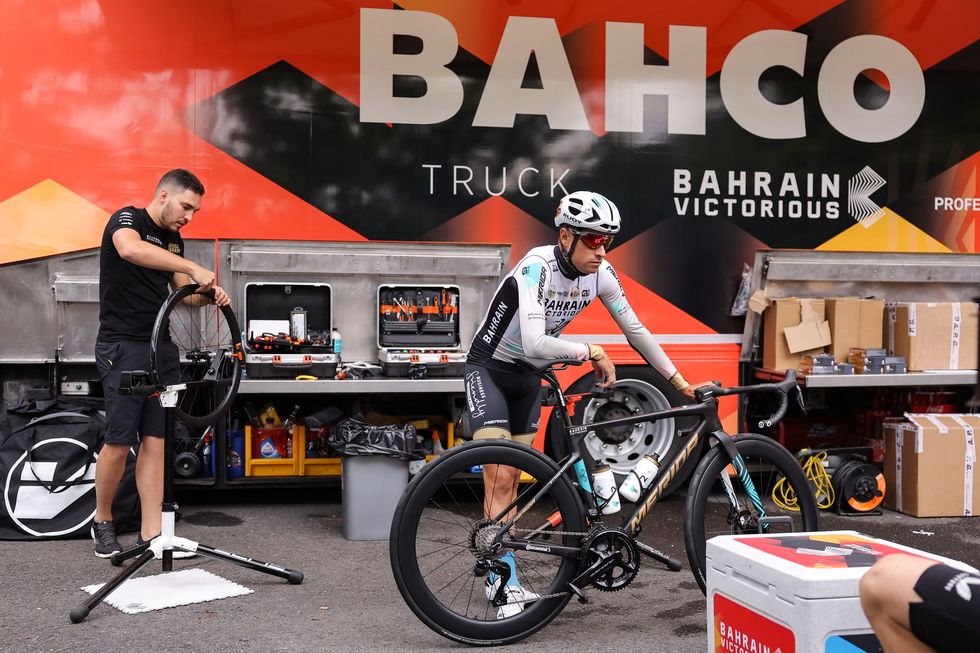
Imagine you just rode more than 100 miles up a bunch of mountains, then sprinted your heart out at the finish line. And that you’d been doing that for two weeks straight. Sure, that massage, quick spin to flush out the legs, and a healthy meal made by the team chef while chatting with your teammates and/or loved ones via FaceTime sounds great. But the reality?
“Typically for most riders, it’s rice and chicken post race, back to the hotel for a massage and then dinner,” says Derek Gee , the young Canadian who became one of the most talked-about riders of the Giro d’Italia. “For me, I was completely cracked on eating rice every day so I finished every stage with yogurt and cereal and I never really enjoy massage or find it helpful. So my postrace was just lying in bed and relaxing, eating more cereal.”
Molly writes about cycling, nutrition and training, with an emphasis on women in sport. Her new middle-grade series, Shred Girls, debuts with Rodale Kids/Random House in 2019 with "Lindsay's Joyride." Her other books include "Mud, Snow and Cyclocross," "Saddle, Sore" and "Fuel Your Ride." Her work has been published in magazines like Bicycling, Outside and Nylon. She co-hosts The Consummate Athlete Podcast.

.css-1t6om3g:before{width:1.75rem;height:1.75rem;margin:0 0.625rem -0.125rem 0;content:'';display:inline-block;-webkit-background-size:1.25rem;background-size:1.25rem;background-color:#F8D811;color:#000;background-repeat:no-repeat;-webkit-background-position:center;background-position:center;}.loaded .css-1t6om3g:before{background-image:url(/_assets/design-tokens/bicycling/static/images/chevron-design-element.c42d609.svg);} Recovery
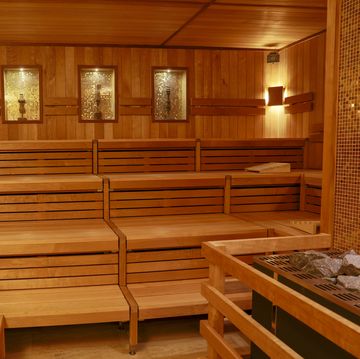
You Need These Stretches if Your Low Back Hurts
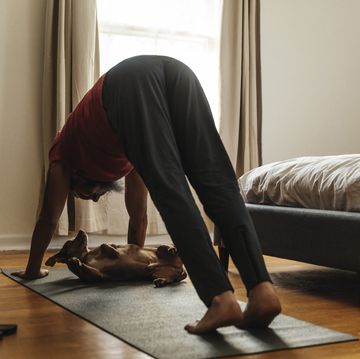
A 15-Minute Morning Yoga Routine for Cyclists

Wind Down With Before Bed Stretches
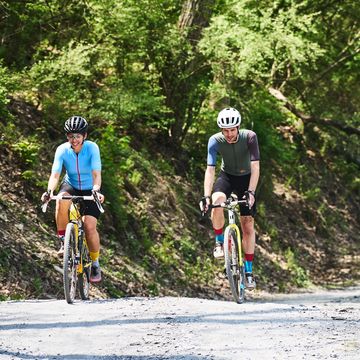
8 Ways to Avoid the Afternoon Slump Before It Hits
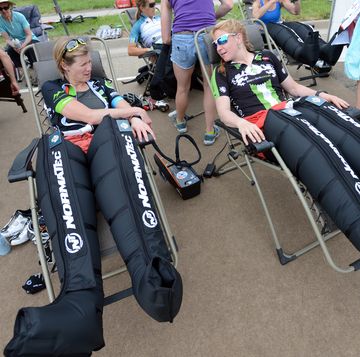
The Benefits of Compression Boots
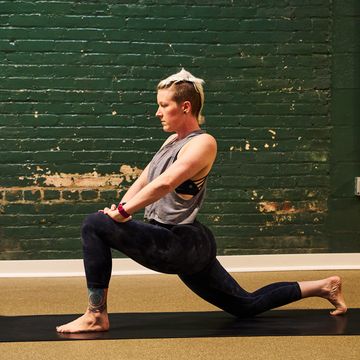
Here’s Exactly How to Cool Down Postride
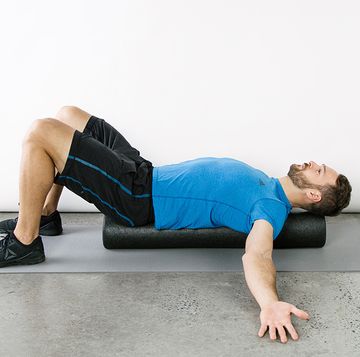
7 Foam Roller Exercises to Alleviate Back Pain

Sleep Quality Really Does Affect Your Emotions
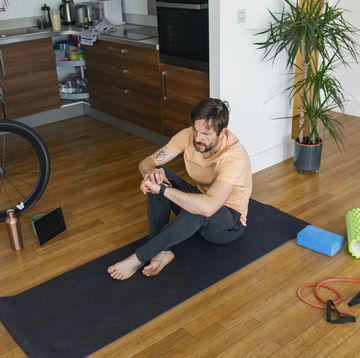
How to Manage Inflammation After a Workout

Your Comprehensive Cycling Recovery Guide

The Benefits of Acupressure Mats

TYPES OF BIKES PERMITTED
- For the 75-mile, only road bikes are permitted.
- For the 45-mile ride, road and gravel bikes with drops are allowed.
- E-bikes are allowed in the 25-mile ride, although any cyclist riding an e-bike won’t be ranked in a specific ranking to preserve fairness between participants.
SAFETY EQUIPMENT
- All participants must wear helmets in all distances for the entirety of the race.
AGE REQUIREMENTS
- Riders must be 16+ to ride in the 75-mile or 45-mile events.
- Riders must be 14+ to ride in the 25-mile event. NOTE: If a rider is 14 or 15, they must ride with a parent or approved guardian over 18
AGE CATEGORIES
- 21 to 29
- 30 to 39
- 40 to 49
- 50 to 59
- Overall winners: The top overall individual female and male finishers will be presented with the iconic yellow jerseys for the 75-mile and 45-mile race.
- Queen of the Mountain (QOM)/ King of the Mountain (KOM) winners: The fastest individual male and female riders in each age category over the timed climb section will be awarded the polka-dot jersey.
- Sprint winners: The fastest male and female riders in each age category through the timed sprint section will be awarded the green jersey.
- Overall fastest under 25 years old: The fastest overall individual female and male finishers under 25 years old will receive the white jersey.
- Top 3 finishers in each age category for the 75-mile race and 45-mile race will receive winner’s medals.
TIMING AND CUT-OFF TIMES
- Riders in the 75-mile ride must maintain 11.0 mph to make the time cut off of 12:15pm at mile 57.4 on the 75-mile route. All 75-mile riders must be clear of Highway 160 by 12:15pm. Riders not maintaining this pace will be turned early on course to ensure Highway 160 is clear per our Nevada Department of Transportation Permits.
SAFETY + CODE OF CONDUCT
- Unless otherwise or expressly stated, the roads should always be considered as open to traffic (even if road signs suggest they may be shut) and you must ride accordingly as local access traffic may still use closed roads. Please obey all Highway Code rules and road regulations at all times.
- NOTE: We reserve the right to terminate participation on health and safety grounds. This includes, but is not limited to, the re-direction or closure of sections of the route due to events outside our control, rider route progress, or in the event of severe weather conditions.
From the start to the finish of this event that uses the public highway, all participants will be expected to adhere to all briefings/information given in communications shared in advance of the event, briefings given on the day (which may supersede previous information if there have been any changes), and also to the Human Race cycling code, which includes the following:
Code of Conduct:
- You are requested to ride at a maximum 2 abreast at any time. Single file riding is mandatory when double white line systems are in operation on the roads.
- Unless required during a safe overtaking procedure you should not cross the centre line whilst riding, and should make sure, particularly on descents, that you slow down sufficiently to be able to make a turn onto a side road without having to cross onto the ‘wrong’ side of the road.
- Obey all directions from police, traffic control personnel or course workers. Riders MUST give way to emergency vehicles. Where the route has a delineated lane closure (e.g. cones), crossing into the non-delineated lane is strictly prohibited.
- Look for obstacles, ride safely and predictably. Don’t swerve and weave, keep your head up, and ride in single file when possible. Please be aware of and exercise good road riding etiquette.
- Riders will be assigned to a start corral based on the anticipated average speed provided at registration. Riders will not be allowed to move forward into a faster corral, but will be allowed to move into a slower corral.
- Please always remain aware of your fellow participants and all other road users (including motor vehicles, other cyclists, horse riders and pedestrians) and ensure you always leave sufficient space / give way where required.
- Please always indicate & signal your intention to stop or change direction, including at junctions.
- Please also take note of any specific event signage which has been erected for the event as this will be in place for your safety and to warn you of what is approaching– HOWEVER these will not and cannot highlight every risk and so you must remain alert & maintain an awareness of your surroundings at all times.
- You should remain in control and ride according to your ability as well as the road conditions / environment. So think and look ahead to look out for any potential obstacles / risks coming up. This may include hidden dips and obstacles / hazards around corners – if you cannot see a good way along the road ahead of you or around a corner then slow down accordingly so you can respond / react if necessary.
- Please look out for and observe all Highways signage relating to descents, bends, general road regulations, cattle guards and other hazards.
- Please note that we reserve the right to terminate your participation if you fail to comply with any of the above, or are seen to be riding dangerously.
- Cut Off Times: For course management and road safety, a cut off time will be established for the 75 Mile route. Riders outside of this time will be re-routed to the 45 course, your distance will be changed automatically to the 45 Mile ride and your time will reflect your finish time for the 45 Mile distance.
- There is no outside support allowed for the entirety of the ride.
- The event organizers reserve the right to refuse entry into the event if any of the above rules are violated by a participant.
ENVIRONMENTAL STEWARDSHIP
- To ensure L'Étape Las Vegas organizers and all partcipants are stewards of the environment and the natural surroundings in which the event takes place, it is strictly forbidden to leave litter (paper, plastic wrappers) on the route. Bins will be provided at all feeding zones. Participants must make use of them when disposing of waste. Participants must hold onto their litter and wrappers and wait until they reach the places set up by the Organizer to dispose of them. The Organizer reserves the right to award time penalties or exclude participants from the race who deliberately dispose of their waste elsewhere than in these specific areas.
REFUNDS, DEFERRALS, TRANSFERS
- Refund Policy: There are no refunds. Unfortunately, there are no exceptions. However, during registration you have the option to choose the Optional Upgrade - Refundable Registration. This will allow you to cancel your registration and receive a refund. Please take the time to review the Terms & Conditions of this product before making your selection. We strongly recommend you choose this option for the most flexibility. We recognize that injuries and unforeseen events can happen. If you choose not to purchase the Optional Upgrade - Refundable Registration and cannot ride, please refer to our Deferral & Transfer options
- Deferral Policy: You may defer your entry to next year’s event. Deferrals must be processed by the Event Registration Manager. An administration fee of $50 will be charged at the time you register for the 2024 event. The athlete may request a deferral by submitting an email request prior to February 10, 2024. To defer your entry please email [email protected] .
- Transfer Policy: You may transfer your entry to another rider. Transfers must be processed by the Event Registration Manager. An administration fee of $25 will be charged at the time you transfer your entry to another rider. The athlete may request a transfer by submitting an email request prior to February 10, 2024.
USE OF IMAGES
- The Event may be recorded for public communication purposes, in any form (notably through photos, videos, etc.), on any existing or future media, in any format, for any communication to the public around the world, for any use including advertising and commercial use. As such, each participant expressly grants the Organizer, its assignees and beneficiaries (notably its commercial partners) permission to record and reproduce, on any media and using any means, and subsequently to reproduce and represent, without remuneration of any kind, their name, voice, image and, more generally, their sporting activity within the context of the Event (hereinafter their “Image”). The participant expressly authorizes the Organizer to concede to Event partners sub-licenses for the use of the Image for commercial and advertising purposes.
- The participant gives his express and irrevocable permission for the Organizer, its delegates and its successors (notably its commercial partners) in order to meet the requirements of advertising, promotional and/or commercial campaigns, to 1) apply any modifications, additions, or deletions that it sees fit when using the participant’s image in any of the circumstances defined above, and 2) associate and/or combine the participant’s image with signatures, catchphrases, slogans, captions, brands, distinctive signs, legal notices, visuals and, in general, any element of any kind chosen by the Organizer to illustrate the means of communication in which the images are used.
- The participant guarantees that he is not bound by an exclusive contract relating to the use of his Image.
Our partners Make it happen

Le Tours de France

Tuesday, September 17, 2013
Tour de france: race's regulations (rules), no comments:, post a comment, let others know, useful links/adverts.
- Tour de France: Race's Regulations (Rules)
- Tour de France Jersey Colours and Prizes for Winners
- Tour de France map (route)
- Lance Edward Armstrong: Tour de France's Career an...
- Some Important Tour de France's Regulations and Tips
- Le Tour de France Regulations (Rules): Guiding Que...
- The Birth of the Tour de France, 110 Years Ago
- 100 Years of Tour de France, winners and the evolu...
- Tour de France's 100 most memorable moments (1903-...
- LIST OF WINNERS OF THE TOUR DE FRANCE SINCE 1903
- Latest Posts
- Recent Comments
Back to top

IMAGES
VIDEO
COMMENTS
The Tour de France is cycling's most prestigious race, but even so there are probably some rules and regulations governing the running of the event and the conduct of the riders, teams and staff ...
WellnessWeight LossNutritionSexual Health. Workouts. Celebrity WorkoutsAb WorkoutsLeg WorkoutsTotal-Body WorkoutsArms WorkoutsChest Workouts. Food & Drink. WhiskeyBeerRecipesCocktails ...
Tour de France - The Rules Explained. By WeLoveCycling June 30, 2017 at 1:13 pm. Some teams will focus on the general classification Yellow Jersey, whereas others will focus on winning sprints for The Green or the King of the Mountains Spotted Jersey. There are many rules, both spoken and unspoken, as teams stand to gain a lot from ...
How The Tour de France Works The Tour de France: Infographic. What is the Tour de France. The Tour de France is the world's most prestigious bike race which has been running for over 100 years. The Tour takes riders all across France, through the Alps and the Pyranees, and finishes in Paris. This year it will take place: July 1 - July 23, 2023
20 years ago this July, on the final climb of the final mountain stage of the 2003 Tour de France, Jan Ullrich finally looked capable of defeating his old adversary, Lance Armstrong. For arguably the only time during his seven-year-reign, the disgraced Texan appeared out-of-sorts at the Tour.
Article 20 states: "In the event that a rider or riders suffer a fall, puncture or mechanical incident in the last 3 kilometers and such an incident is duly recognized, the rider or riders ...
The Tour de France is designed to welcome all audiences. However, the itinerancy of the event sometimes makes it difficult for us to anticipate access constraints at the sites, which is why we are appealing for your indulgence. Our concern is to facilitate your visit to the Tour de France so that you have a pleasant day!
The Tour is made up of 21 separate " stages "; one stage per day. Think of each stage as a standalone race. In each stage, all of the riders start at Point A and ride to Point B. The first person to reach Point B wins that stage and gets a prize. The next day, everyone starts at Point C and races to Point D, and so on.
Tour de France, the world's most prestigious and most difficult bicycle race.Of the three foremost races (the others being the Giro d'Italia and the Vuelta a España), the Tour de France attracts the world's best riders. Staged for three weeks each July—usually in some 20 daylong stages—the Tour typically comprises 20 professional teams of 9 riders each and covers some 3,600 km ...
The first Tour de France ever staged in 1903 granted a prize of 20,000 francs, which amounts to approximately $22,280. For 2023, a grand total of €2,308,200 is on offer ($2,526,735). This number, however, is not all given to one rider, but rather split among top general classification riders, stage winners, top sprinters and winners of other ...
The 2014 Tour de France is just a few stages old, and already we are seeing evidence of the official and unofficial rules of this great race - the Tour on paper versus the Tour on the road.
In this video, we will list a few of the weirder facts you may not know about The Tour de France. We've also enlisted the help of GCN+'s own Cillian Kelly to dive into some of the lesser-known historical facts of this crazy race. 0:00 - Intro. 1:12 - Podium dress code. 1:36 - Keeping cool. 2:11 - Unwritten rules. 3:19 - Historical facts.
Tour de France Guide (rules). Enables you to step into the shoes of a racing cyclist, embarking on a highly-accurate reproduction of the Tour de France circuit ... Regulations of the Tour Overall ranking. The general overall individual time ranking is established by adding together the times achieved by each rider in the 21 stages. Points ranking.
The Tour de France is a 3353-kilometre, three-week long bike race held predominately (although not entirely) in France, from the 1st to the 24th of July. These 3353 kilometres are split into 21 stages, that range from 13, to 220 kilometres long.
Obviously, a race like the Tour de France has a number of rules and regulations governing its running. A lot are totally mundane, but a few are of interest to the cycling aficionado. ... His assignments have taken him to such prestigious events as the Tour de France, Tour of Italy, Tour of Spain, Tour of Switzerland, Paris-Roubaix, Tour of ...
Tour De France For Dummies. Tour rules and regulations are detailed in race Articles. Listed in the Technical Guide, they range from participation to disqualification, medical care to prize money. Rules are written and detailed in French and English. Because French is the universal language in cycling (Lance Armstrong, for example, is fluent ...
The unwritten rules of the Tour de France once included a ban on launching attacks in tunnels. Christophe Ena/Associated Press. To police these rules, spoken and not, it falls to the dominant ...
The Tour de France for non-professional riders. Dial the emergency no. if you witness a serious accident and indicate the kilometric marker where you are located: +33 9 72 45 60 01 (this number is indicated on your race number).You can also dial this number in the event of a problem on the route so that the Race Headquarters can be informed if necessary.
The first male and female rider age under 25 who cross the finish line will win Best Young Rider classification awarded by Tour de France's white jersey. L'Etape Championship Invitation. Top 3 male and female riders from a long course will be invited to join the next L'Etape Championship in L'Etape Du Tour.
Follow Official Tour de France Rules and Regulations. In order to qualify for the Tour de France, riders must adhere to the official rules and regulations set forth by the race organizers. These include regulations regarding doping, equipment, and safety. Additionally, riders must also be familiar with the race's course and the various stages
The Tour de France for non-professional riders. Menu. The event; The race; Training; Village; Extra services; ... SPORTS RULES OF THE 2022 l'éTAPE DU TOUR DE FRANCE. Rules - L'Étape du Tour de France 2022 ( pdf | 454056 ) MORE VIDEOS. ... Route Route Regulations Regulations Tours Operators Tours Operators Charity bibs Charity bibs ...
Pro cyclists racing the Tour de France or the Tour de France Femmes avec Zwift put their bodies through a battle during every day, for three weeks straight (minus a couple of rest days). But ...
Obey all directions from police, traffic control personnel or course workers. Riders MUST give way to emergency vehicles. Where the route has a delineated lane closure (e.g. cones), crossing into the non-delineated lane is strictly prohibited. Look for obstacles, ride safely and predictably.
Tour de France: Race's Regulations (Rules) ARTICLE 1 Participation The 100th Tour de France organised by TDF SPORT and Amaury Sport Organisation (A.S.O.), will be held from Saturday June 29th to Sunday July 21st 2013 comprising of 21 stages. A maximum of 22 teams of 9 riders each, that is to